
The Photography Show presented by AIPAD 2025
24 – 27 April 2025
Preview Day 23 April (invitation only)
Booth B11
Park Avenue Amory
New York City
https://www.aipad.com/show
For the Photography Show in New York, in April we will show Guido Guidi’s work in a collection entitled the Vernacular - capturing his brilliant visualising of the everyday.
In an interview in 2015, published in Aperture Magazine (220), Guidi was asked about his sense for the vernacular which he shares with the American artist photographer, Lee Friedlander’s work, “I remember that I had seen Friedlander’s name in Ugo Mulas’s photobook New York: The New Art Scene (1967). As soon as Friedlander’s Self Portrait came out in 1970, I bought it, but it was only on the occasion of the lone photography biennial, Venice ’79, that I was able to meet him. That was when I heard him talk about the vernacular. He said he wasn’t interested in art photography, but in the vernacular photograph, in the snapshot. I could relate to this, of course, since I had grown up with the family photographs shot by my uncle, who had them printed at the photography store before gluing them into an album.”
Alongside Guidi we show ‘Coast to Coast’, by Swedish photographer Gerry Johansson. This portfolio comprises 10 gelatin silver contact prints, produced by Imagebeeld Edition, Brussels. The photographs were taken during a coast-to-coast long trip in 1983 beginning in Los Angeles and ending in New York.
In an interview in 2015, published in Aperture Magazine (220), Guidi was asked about his sense for the vernacular which he shares with the American artist photographer, Lee Friedlander’s work, “I remember that I had seen Friedlander’s name in Ugo Mulas’s photobook New York: The New Art Scene (1967). As soon as Friedlander’s Self Portrait came out in 1970, I bought it, but it was only on the occasion of the lone photography biennial, Venice ’79, that I was able to meet him. That was when I heard him talk about the vernacular. He said he wasn’t interested in art photography, but in the vernacular photograph, in the snapshot. I could relate to this, of course, since I had grown up with the family photographs shot by my uncle, who had them printed at the photography store before gluing them into an album.”
Alongside Guidi we show ‘Coast to Coast’, by Swedish photographer Gerry Johansson. This portfolio comprises 10 gelatin silver contact prints, produced by Imagebeeld Edition, Brussels. The photographs were taken during a coast-to-coast long trip in 1983 beginning in Los Angeles and ending in New York.
︎︎︎ ︎︎︎
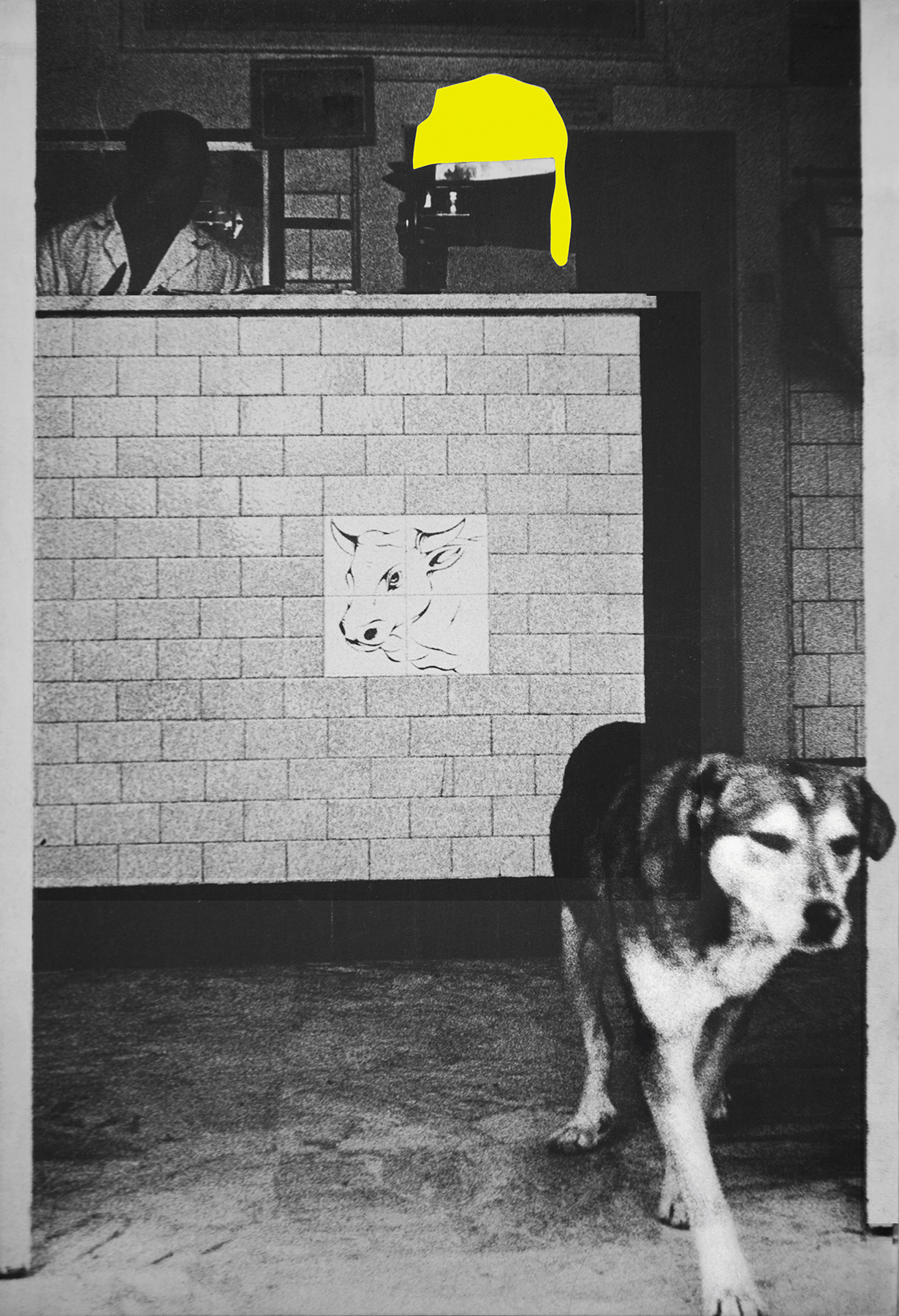
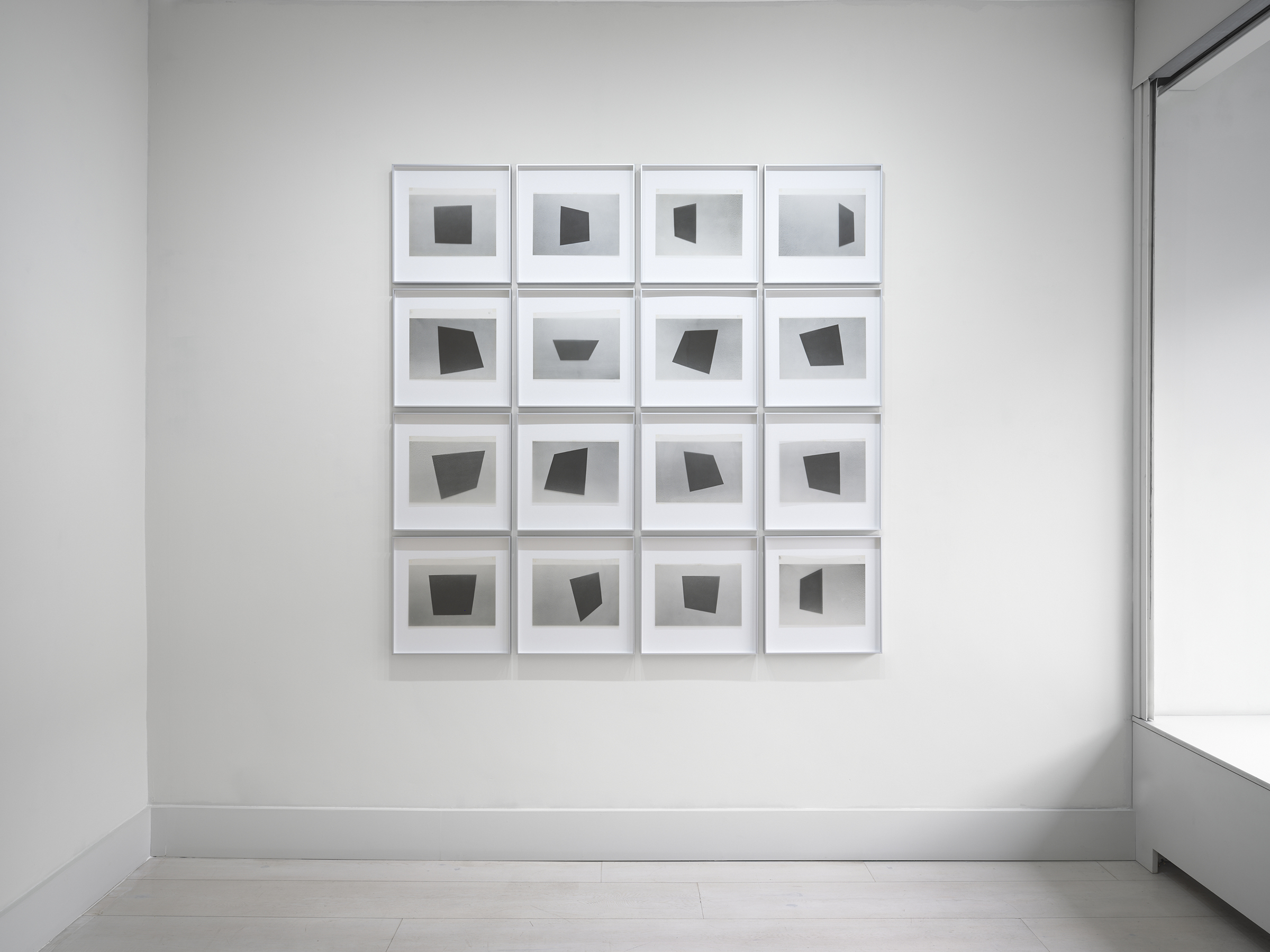
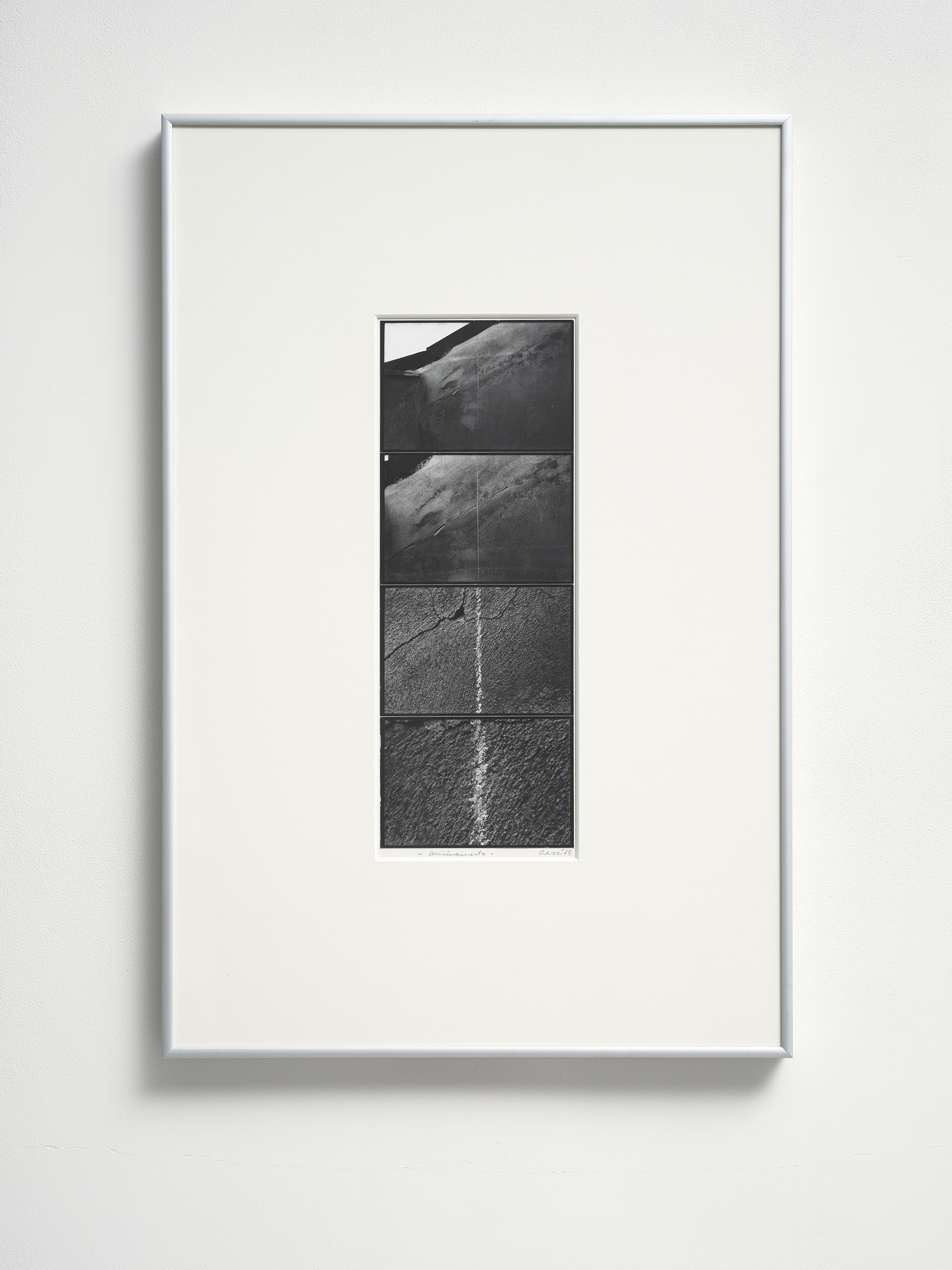
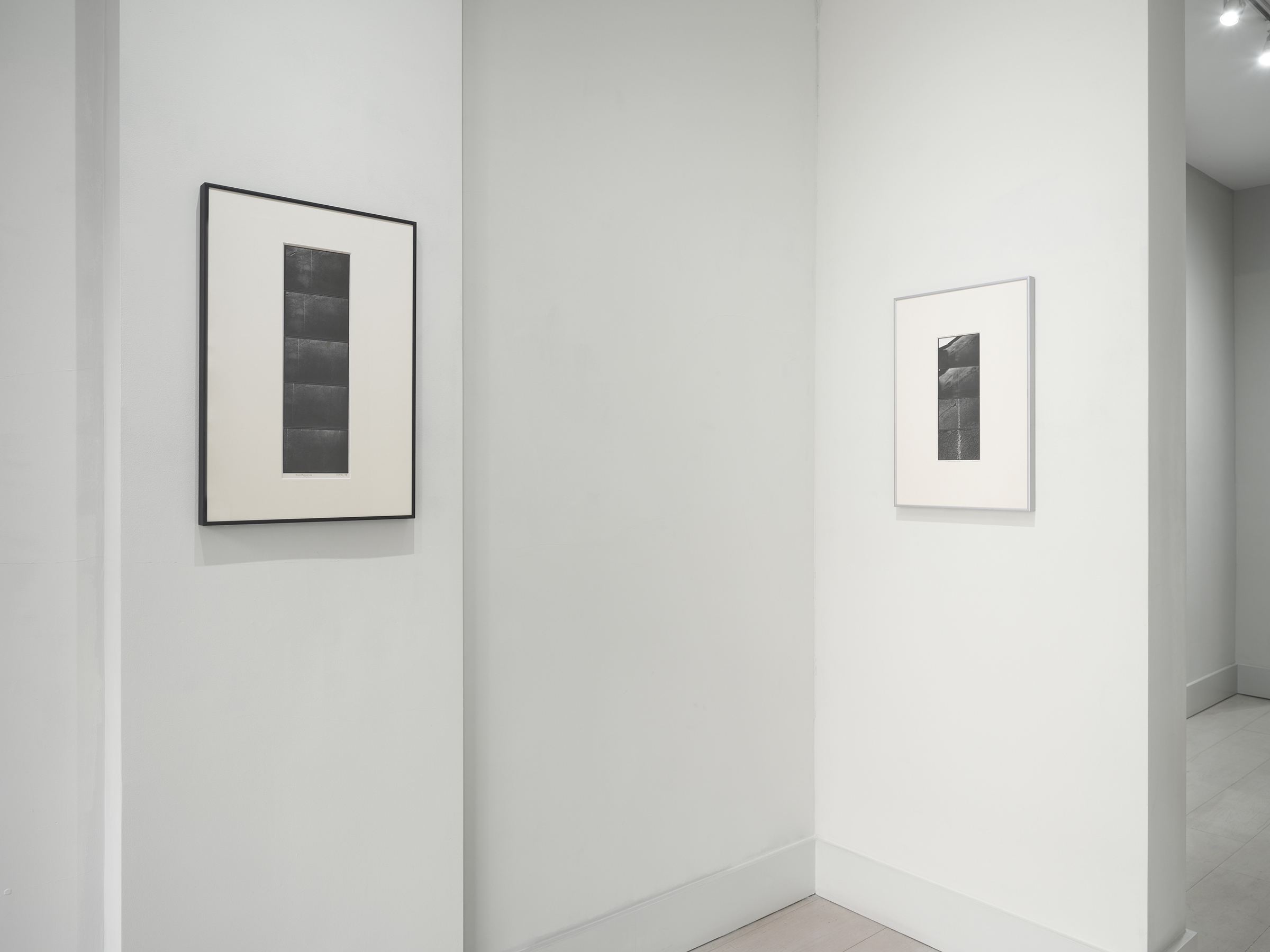
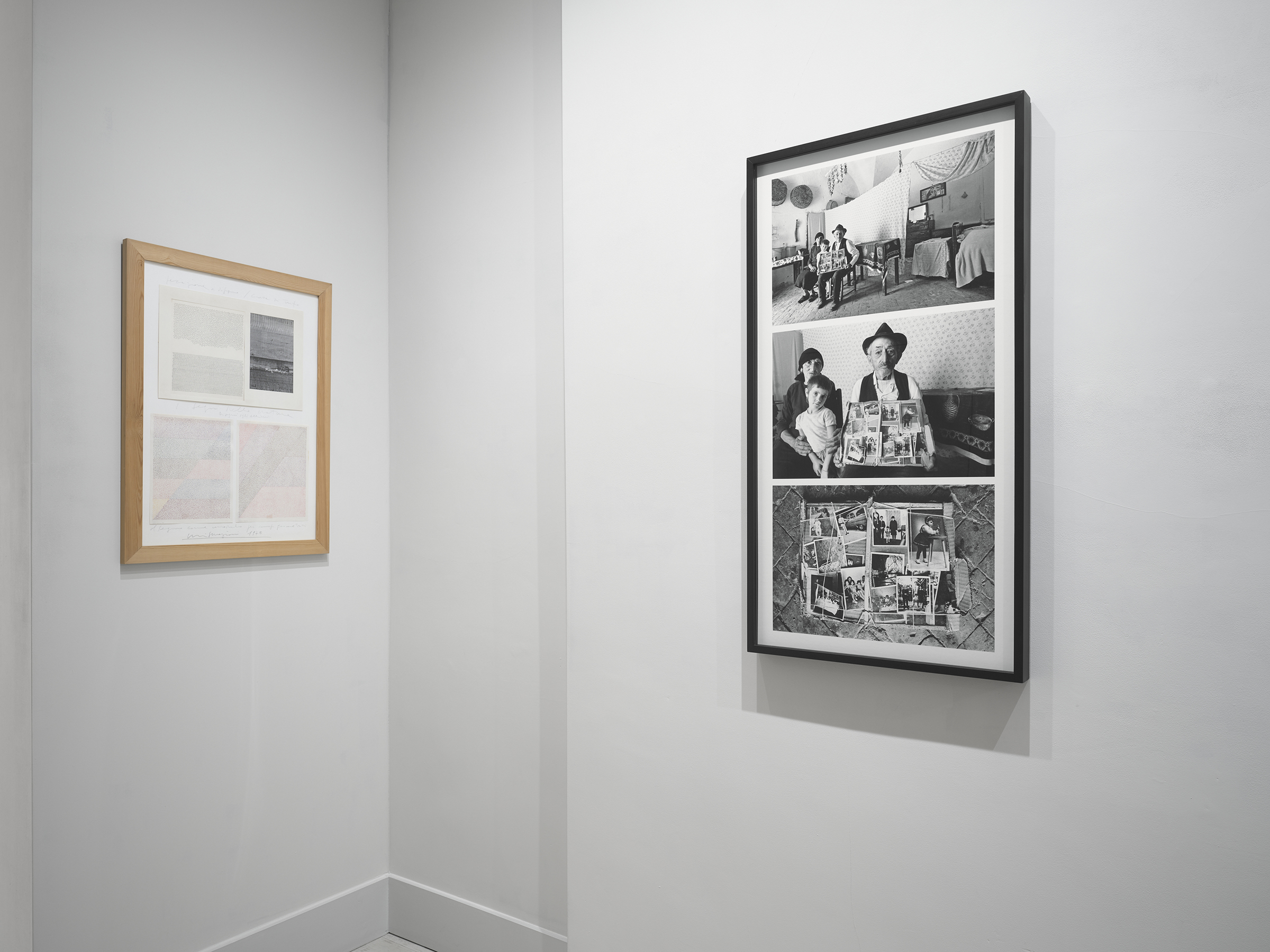

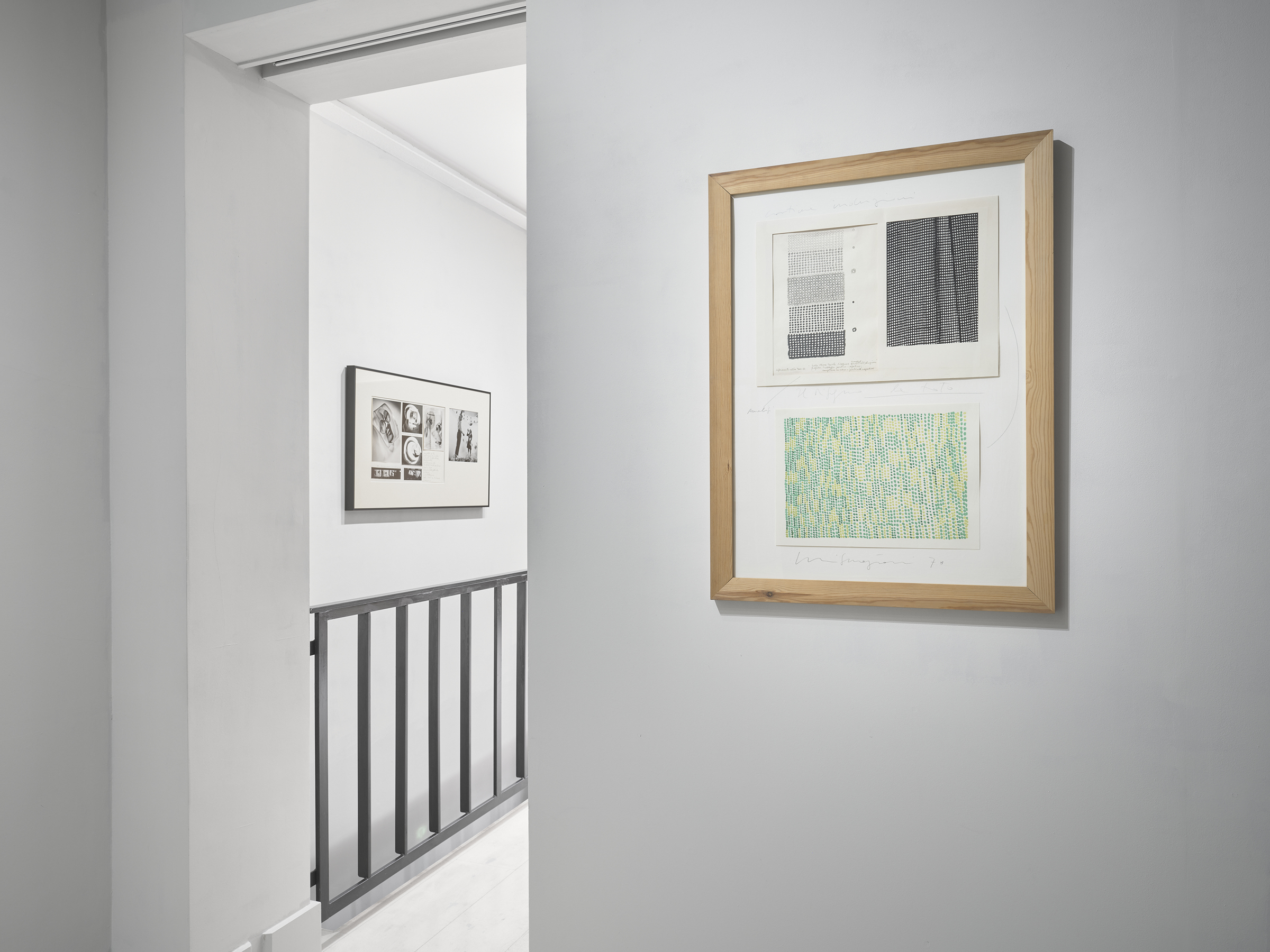

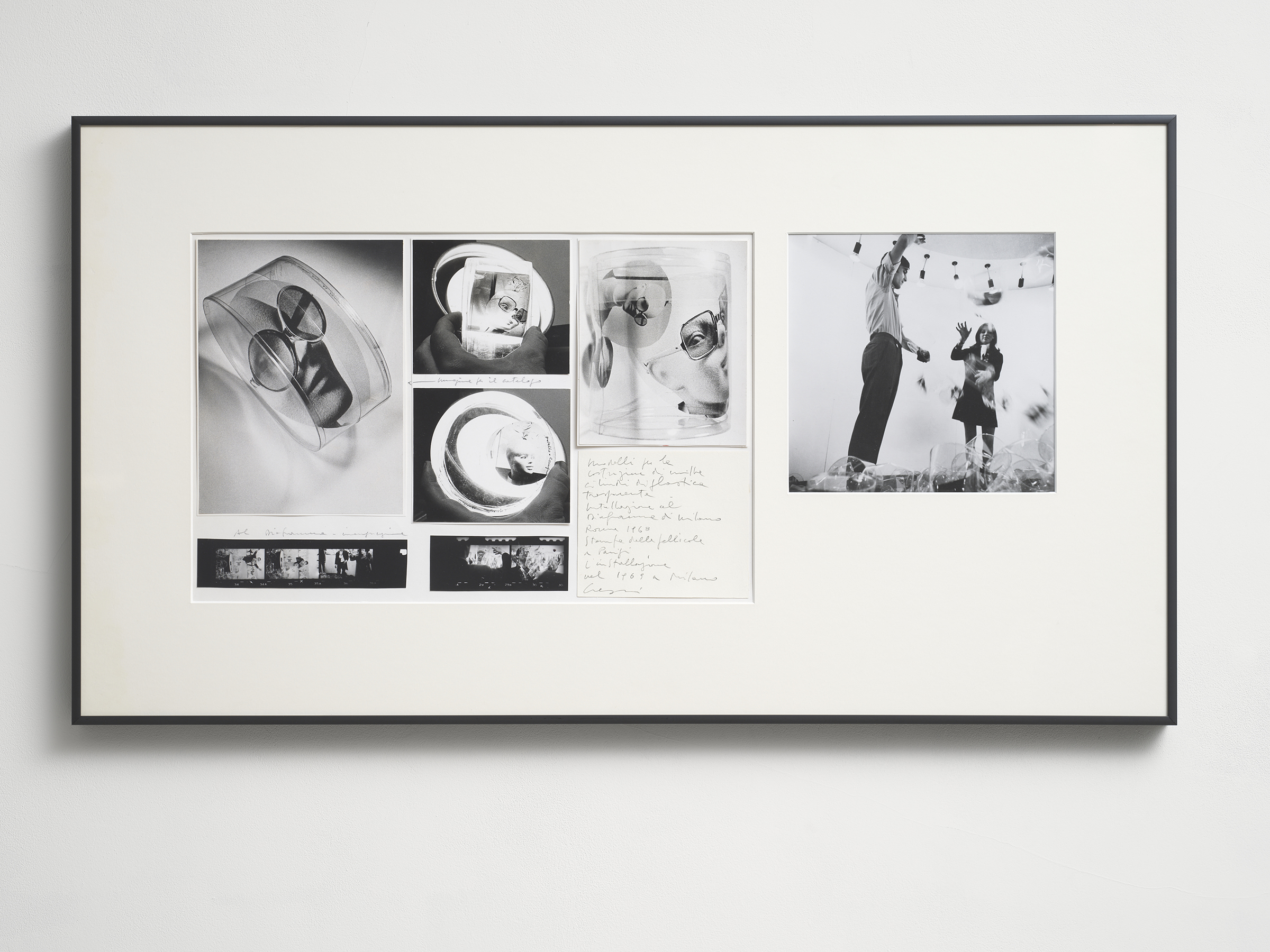


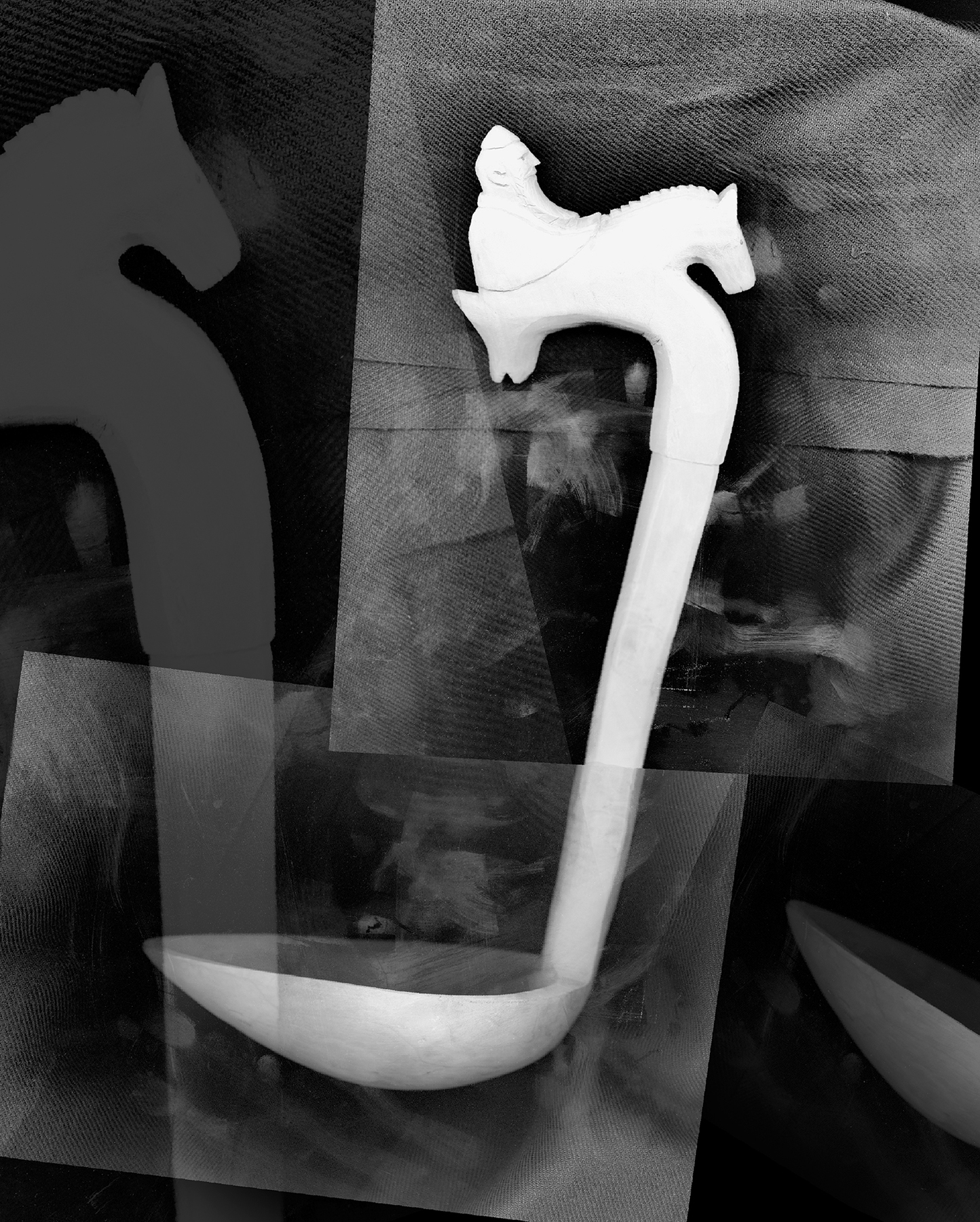
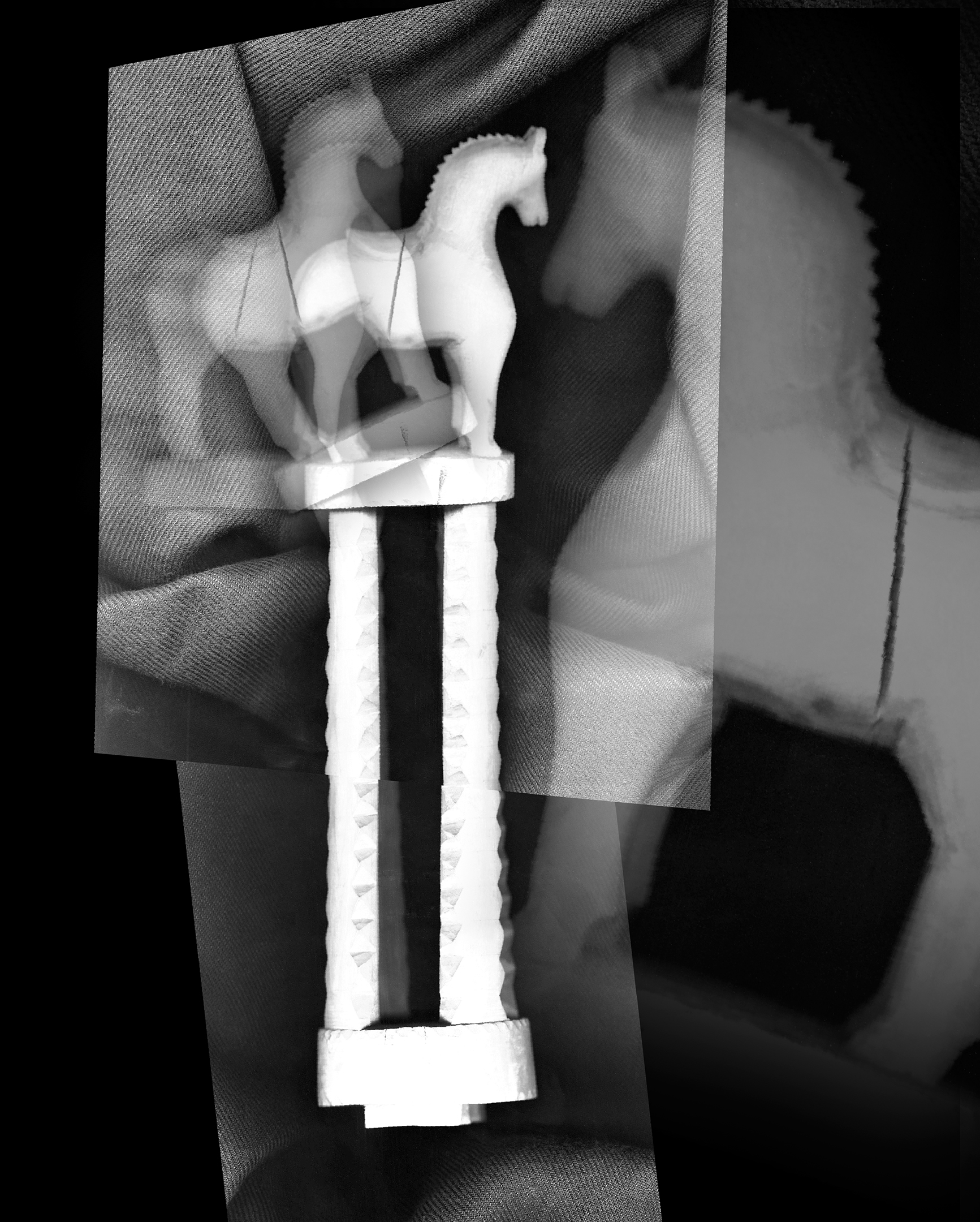

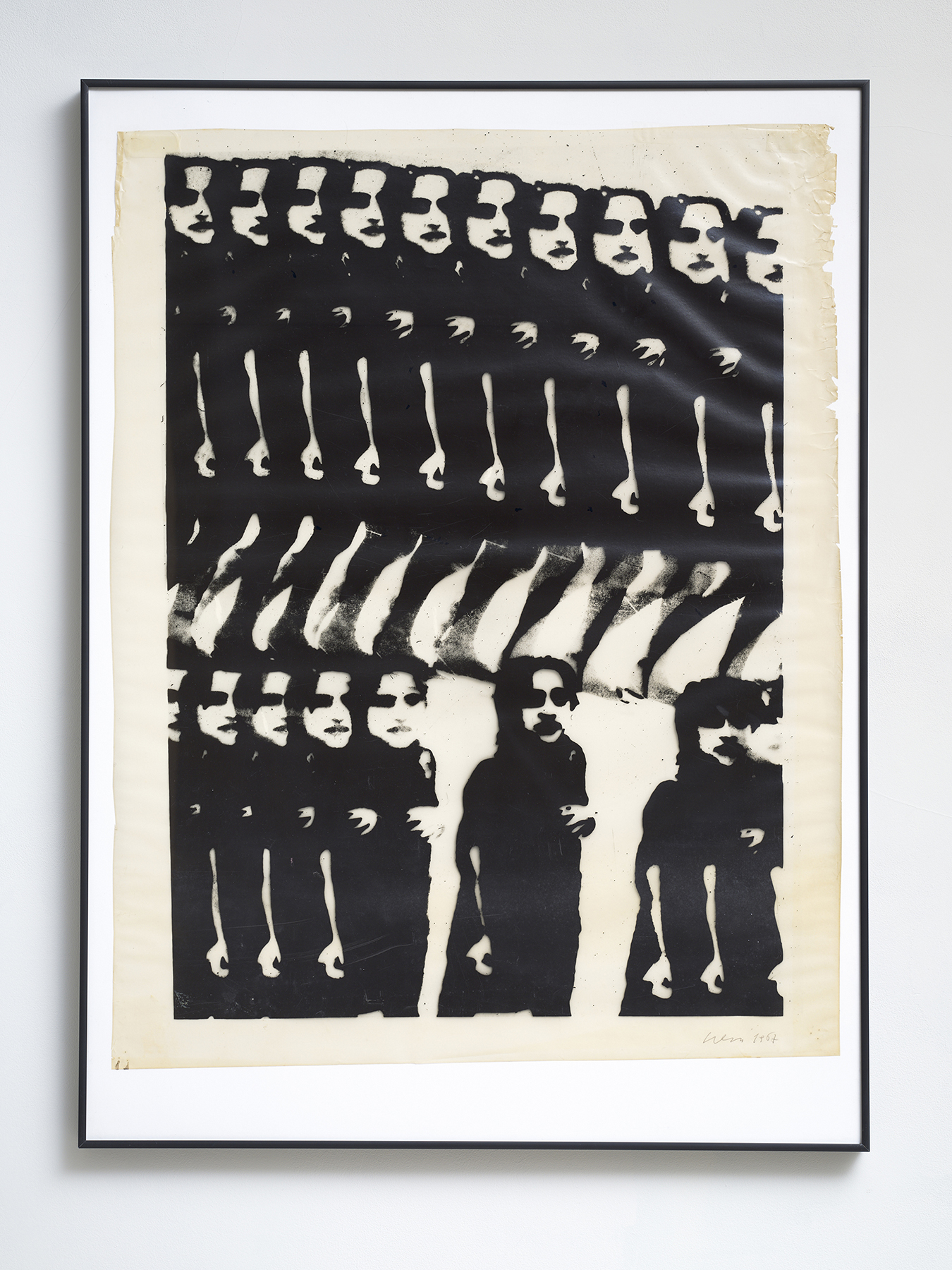

Mario Cresci:
Geometries / Epiphanies
14 Mar—24 May 2025Geometries / Epiphanies is the first exhibition of work by the Italian photographer Mario Cresci (b. 1942) in the UK. The selection shows Cresci’s experimental photography practice, which draws inspiration from Pop Art, Conceptual art and Industrial design, and his long-term artistic project documenting the southern Italian town of Matera.
In the early 1970s, Cresci collaborated with the interdisciplinary research group Polis to produce an urban study of Tricarico, a village close to Matera, the territory had become a symbol of southern Italian ‘backwardness’ in the years following the publication of Carlo Levi’s memoir ‘Cristo si è fermato a Eboli’. Cresci was encouraged to use his camera to open dialogues with local residents and give them an opportunity to represent themselves through their histories and traditions, such as farming and craftsmanship. The project resulted in a series of images that continue to be influential in Cresci’s artistic practice to this day. During his many years in Matera, Cresci focused on the region’s material culture, particularly the objects crafted by local artisans, such as tools and hand-carved wooden toys, which the artist interpreted as a portal to the town’s culture, memory, and sentiment.
Cresci also developed his experimental photography techniques in work outside of Matera. In 1968 the artist moved to Rome, where the L’Attico gallery commissioned him to photograph exhibitions of leading figures in the Italian art scene at the time, including Pino Pascali, Jannis Kounellis, Eliseo Mattiacci, Michelangelo Pistoletto, and Alighiero Boetti. Here he developed the conviction that photography could no longer be simply exhibited by hanging it on a wall.
Many artists have sought to push photographic language beyond its "traditional" boundaries by engaging with conceptual art and experimentation and in Cresci’s case, he has found new technological alphabets while staying deeply connected to the nature and culture of places—though never in a didactic way. His vision always holds a spark that surprises us and which is capable of offering true epiphanies.
Mario Cresci, born 1942 in Chiavari, Italy, lives and works in Bergamo. Cresci attended the school of Industrial Design in Venice, and currently teaches at the ISIA University in Urbino. He has held solo exhibitions at major museums and institutions including MAXXI, Museo Nazionale delle Arti del XXI secolo, Rome; GAM, Galleria d'Arte Moderna and CAMERA, Centro Italiano per la Fotografia, Turin; GAMeC, Galleria d'Arte Moderna e Contemporanea, Bergamo. His work was included in the recent REVERSING THE EYE, Arte Povera and Beyond 1960-75: Photography, Film, Video exhibition at Jeu de Paume, Paris.
Important publications include Matera. Images and Documents (1975), Measurements. Photography and Territory (1979) and Segni Migranti. Storia di grafica e fotografia (2019), winner of the Prix du Livre Historique, at Les Rencontres Arles in 2020.
Luca Fiore is a writer, critic and curator of photography based in Milan, Italy. He is a regular contributor to Aperture, Il Foglio, Domani, Il Giornale dell’Arte and Tracce. He curated the exhibition ‘Mon cher Abbé Bionaz! Mario Cresci for the Aosta Valley’, at Museo Castello Gamba in Châtillon in 2023.
In the early 1970s, Cresci collaborated with the interdisciplinary research group Polis to produce an urban study of Tricarico, a village close to Matera, the territory had become a symbol of southern Italian ‘backwardness’ in the years following the publication of Carlo Levi’s memoir ‘Cristo si è fermato a Eboli’. Cresci was encouraged to use his camera to open dialogues with local residents and give them an opportunity to represent themselves through their histories and traditions, such as farming and craftsmanship. The project resulted in a series of images that continue to be influential in Cresci’s artistic practice to this day. During his many years in Matera, Cresci focused on the region’s material culture, particularly the objects crafted by local artisans, such as tools and hand-carved wooden toys, which the artist interpreted as a portal to the town’s culture, memory, and sentiment.
Cresci also developed his experimental photography techniques in work outside of Matera. In 1968 the artist moved to Rome, where the L’Attico gallery commissioned him to photograph exhibitions of leading figures in the Italian art scene at the time, including Pino Pascali, Jannis Kounellis, Eliseo Mattiacci, Michelangelo Pistoletto, and Alighiero Boetti. Here he developed the conviction that photography could no longer be simply exhibited by hanging it on a wall.
Many artists have sought to push photographic language beyond its "traditional" boundaries by engaging with conceptual art and experimentation and in Cresci’s case, he has found new technological alphabets while staying deeply connected to the nature and culture of places—though never in a didactic way. His vision always holds a spark that surprises us and which is capable of offering true epiphanies.
Mario Cresci, born 1942 in Chiavari, Italy, lives and works in Bergamo. Cresci attended the school of Industrial Design in Venice, and currently teaches at the ISIA University in Urbino. He has held solo exhibitions at major museums and institutions including MAXXI, Museo Nazionale delle Arti del XXI secolo, Rome; GAM, Galleria d'Arte Moderna and CAMERA, Centro Italiano per la Fotografia, Turin; GAMeC, Galleria d'Arte Moderna e Contemporanea, Bergamo. His work was included in the recent REVERSING THE EYE, Arte Povera and Beyond 1960-75: Photography, Film, Video exhibition at Jeu de Paume, Paris.
Important publications include Matera. Images and Documents (1975), Measurements. Photography and Territory (1979) and Segni Migranti. Storia di grafica e fotografia (2019), winner of the Prix du Livre Historique, at Les Rencontres Arles in 2020.
Luca Fiore is a writer, critic and curator of photography based in Milan, Italy. He is a regular contributor to Aperture, Il Foglio, Domani, Il Giornale dell’Arte and Tracce. He curated the exhibition ‘Mon cher Abbé Bionaz! Mario Cresci for the Aosta Valley’, at Museo Castello Gamba in Châtillon in 2023.
Mario Cresci
Enquiries
press: Sam Talbot PR
sales: Charlotte Schepke
info: Large Glass
Press
The Guardian: ‘Mario Cresci review: - mind bending tricks from an iconoclast’, Charlotte Jansen, 18 March 2025
Enquiries
press: Sam Talbot PR
sales: Charlotte Schepke
info: Large Glass
Press
The Guardian: ‘Mario Cresci review: - mind bending tricks from an iconoclast’, Charlotte Jansen, 18 March 2025
︎︎︎ ︎︎︎
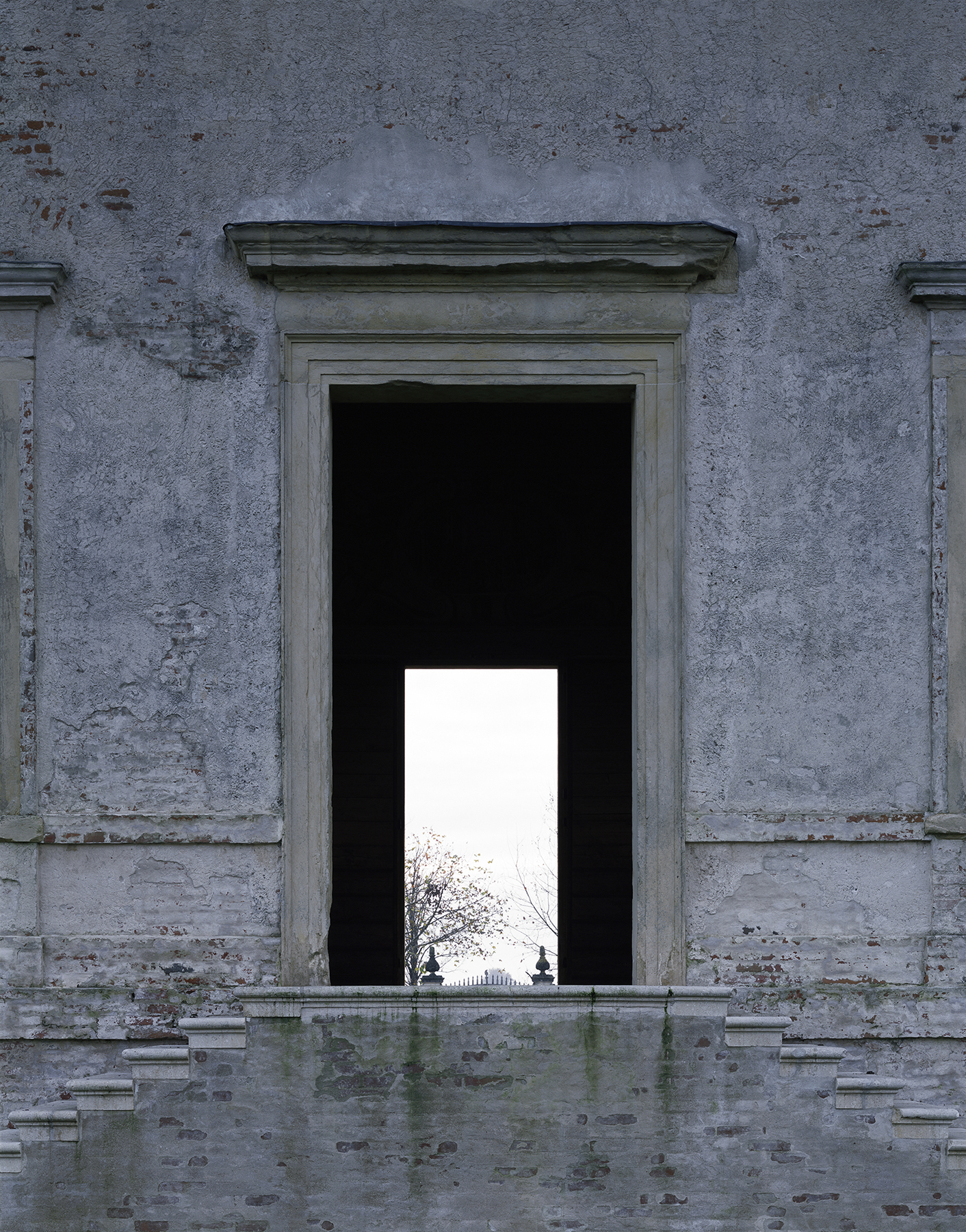
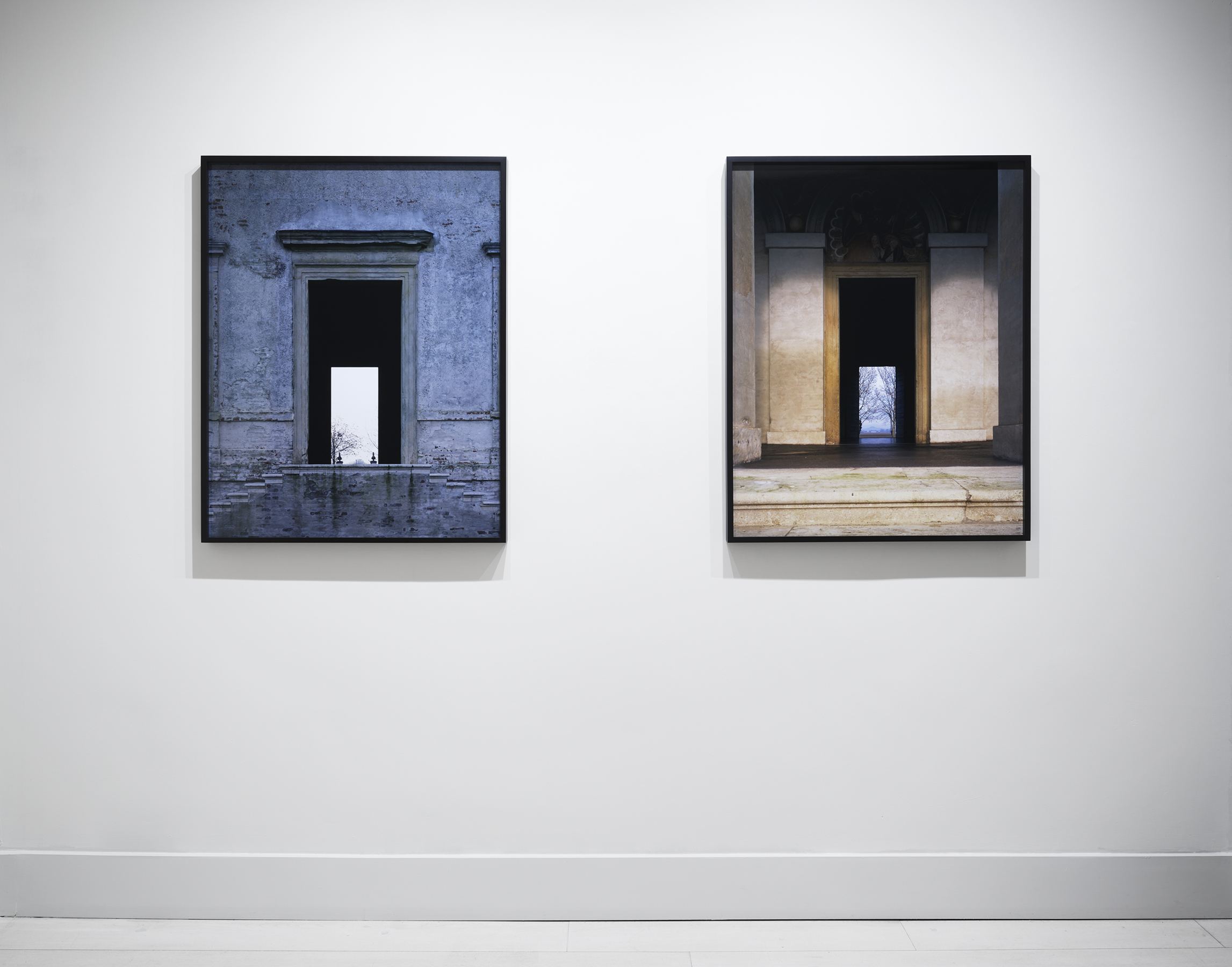


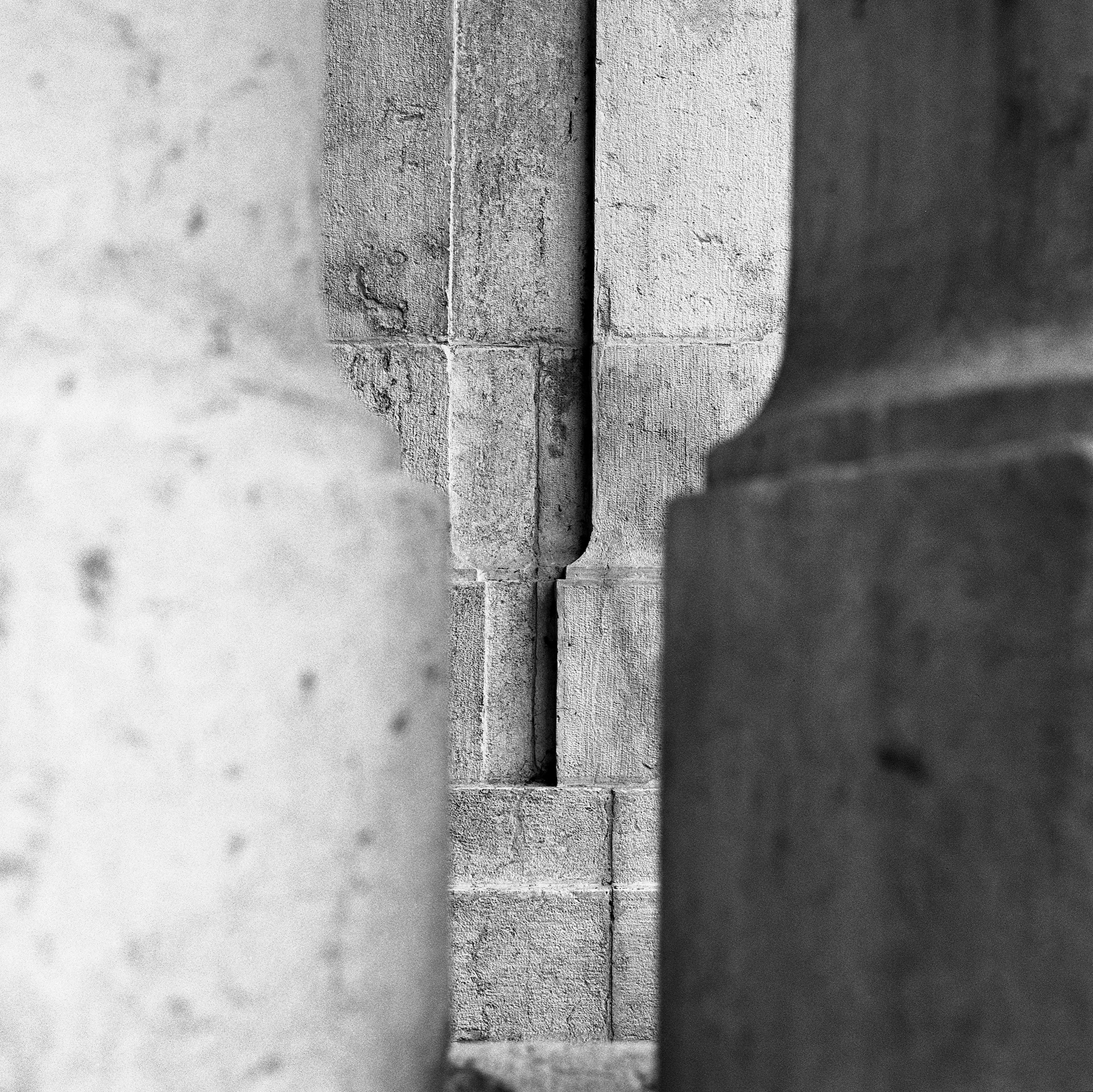

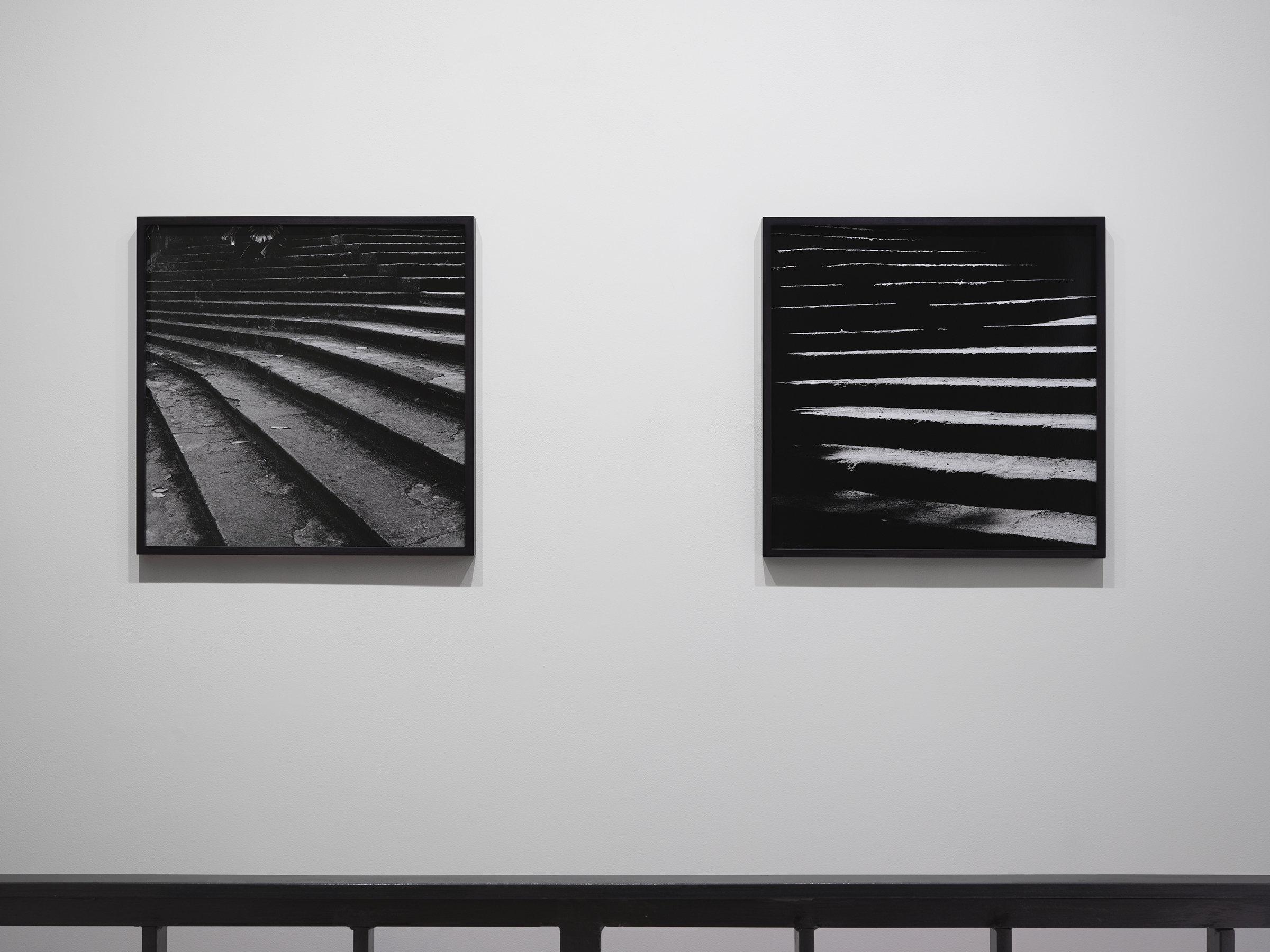
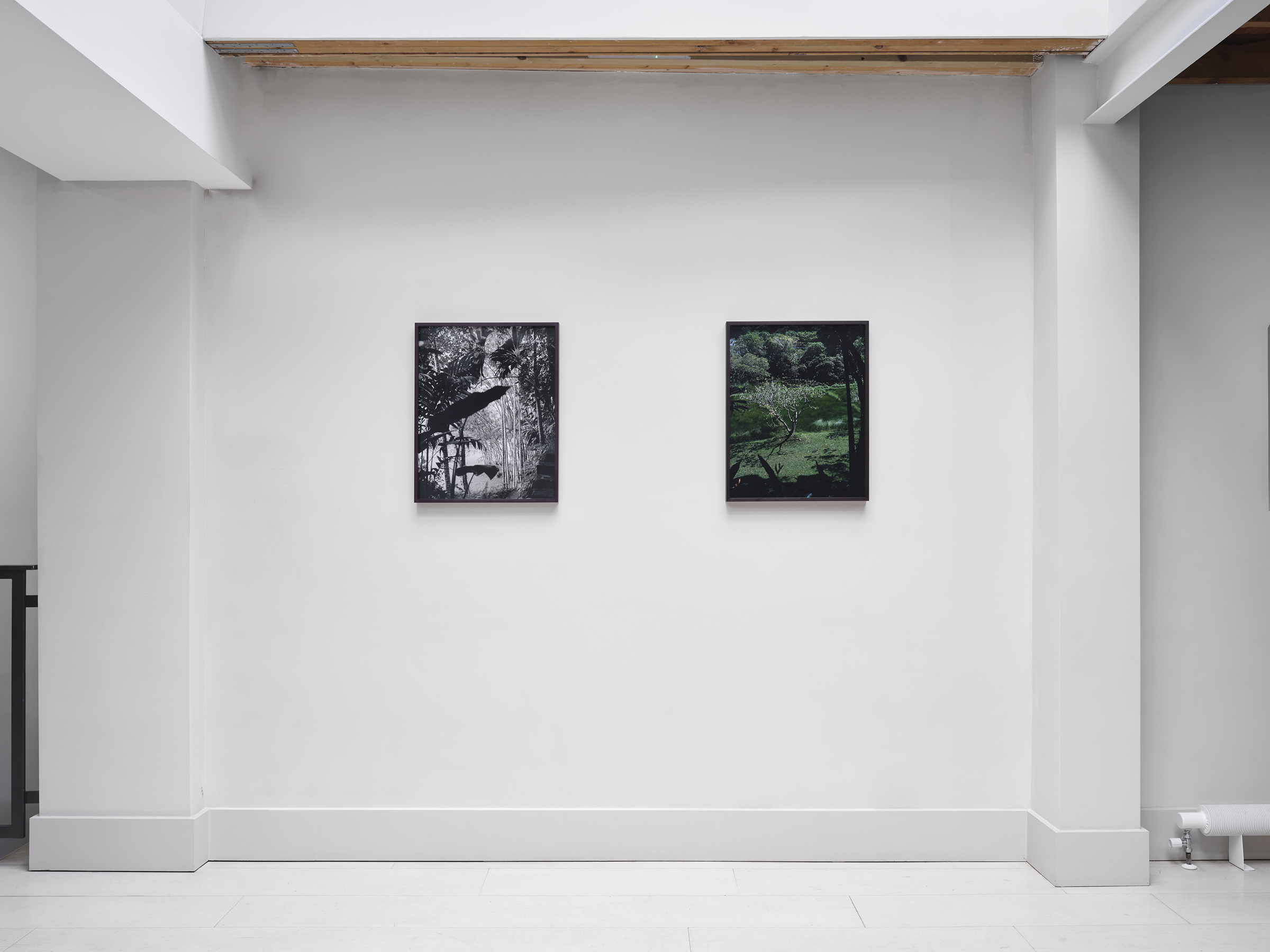
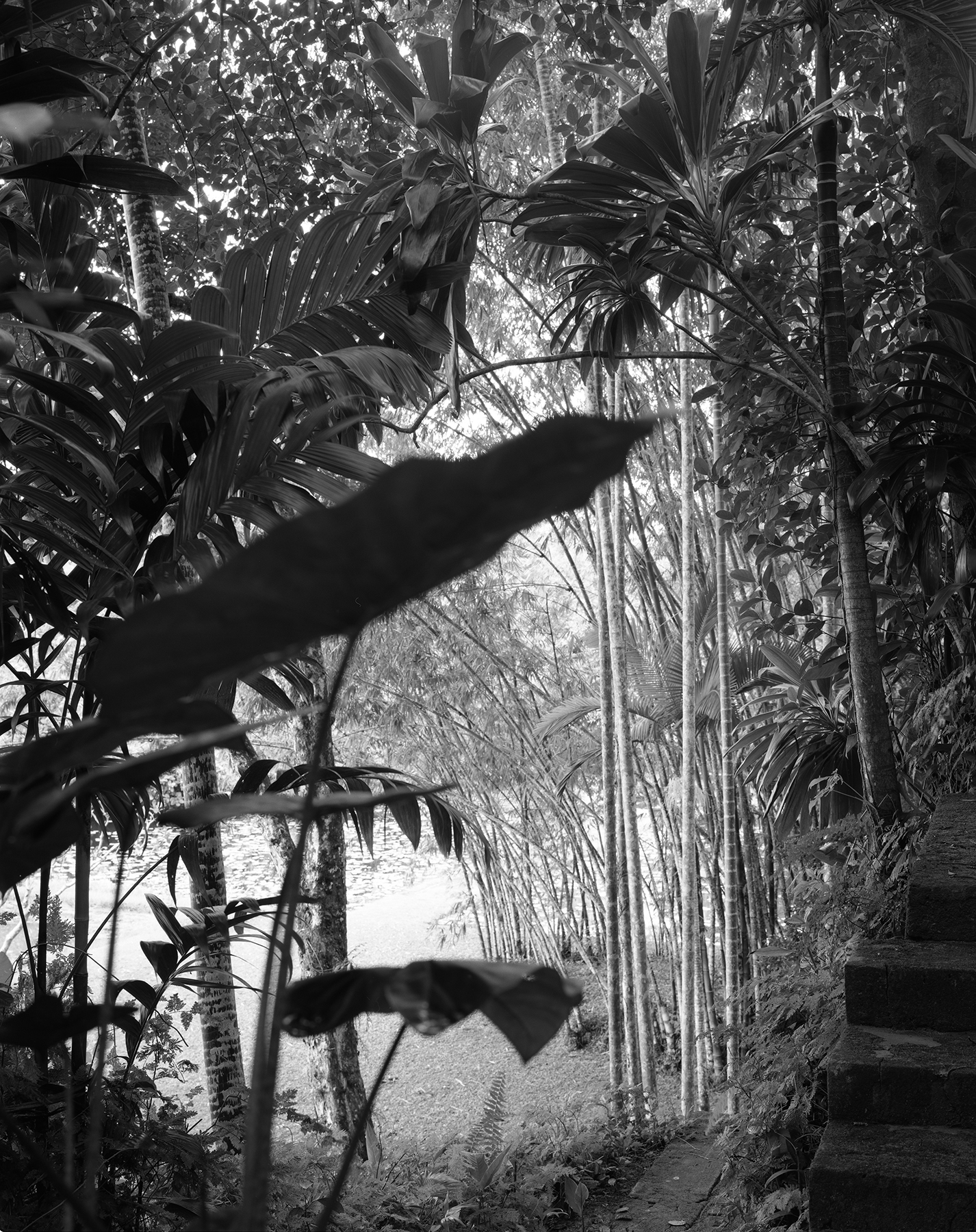
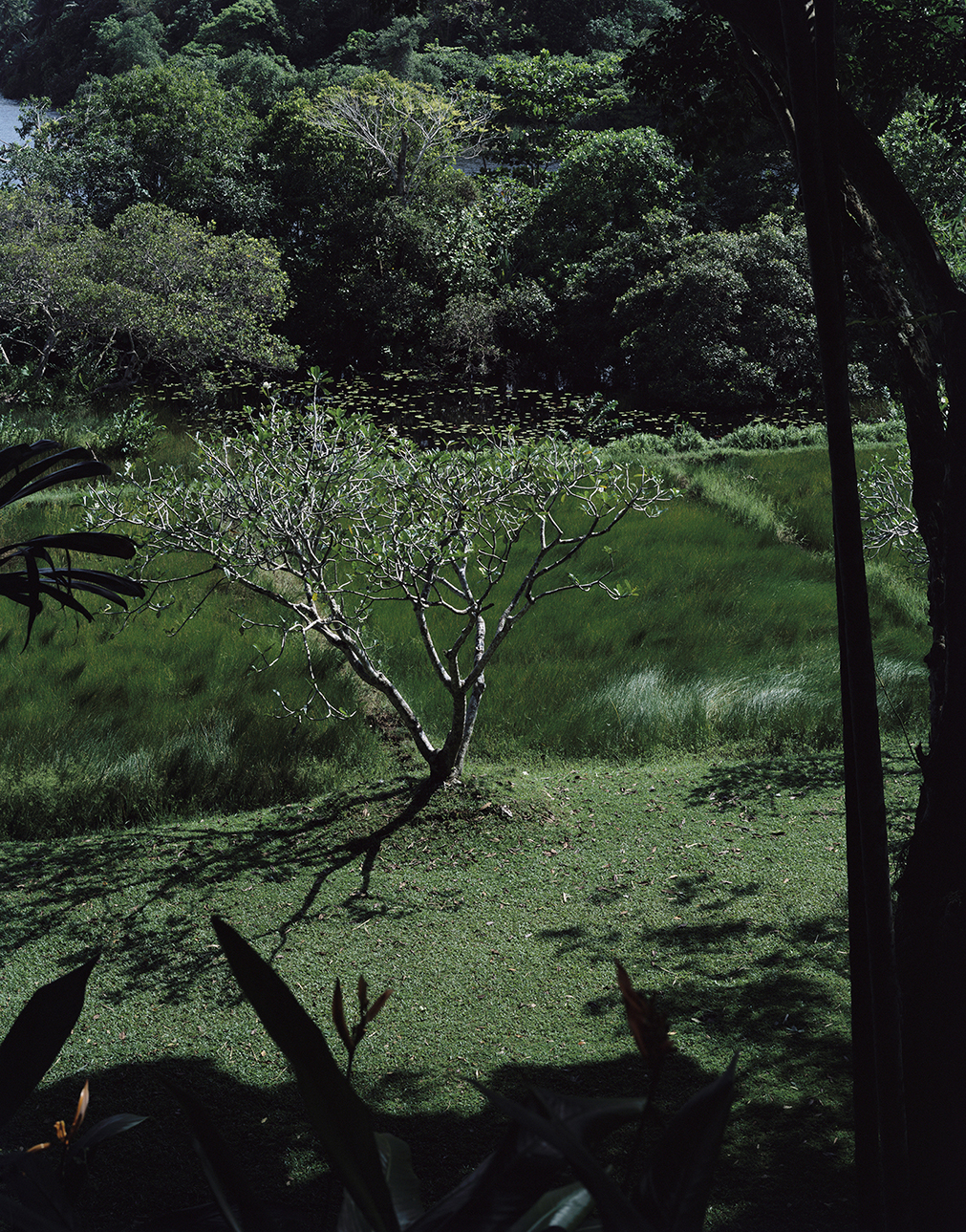
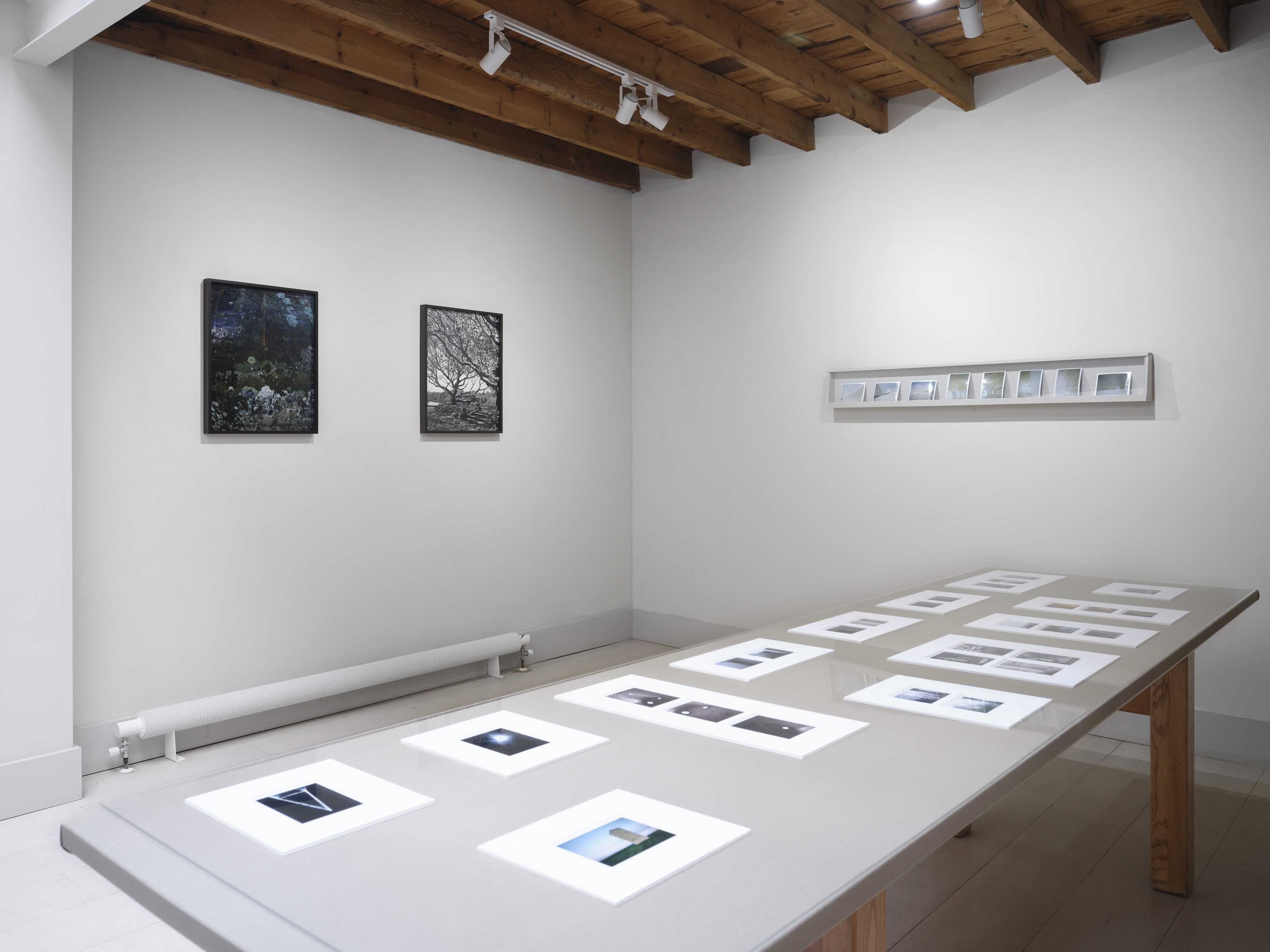
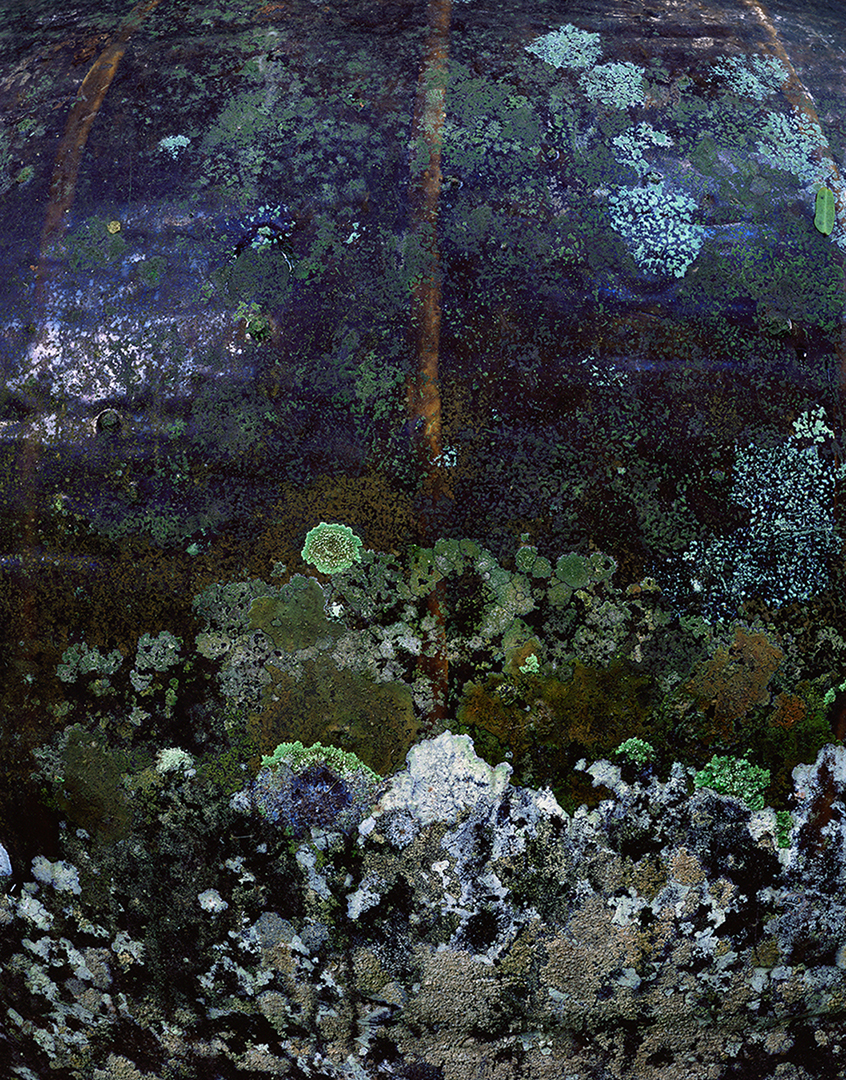

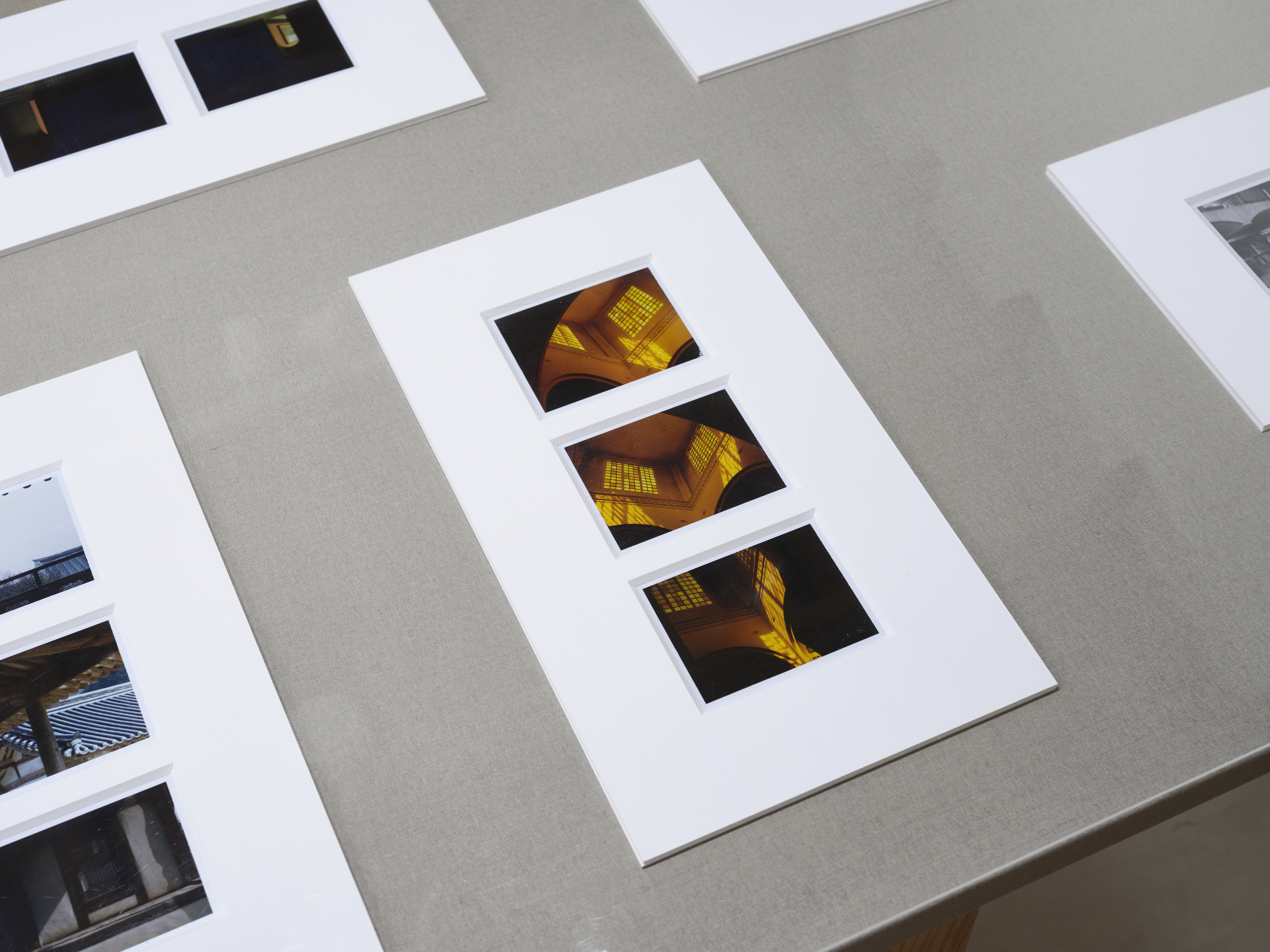
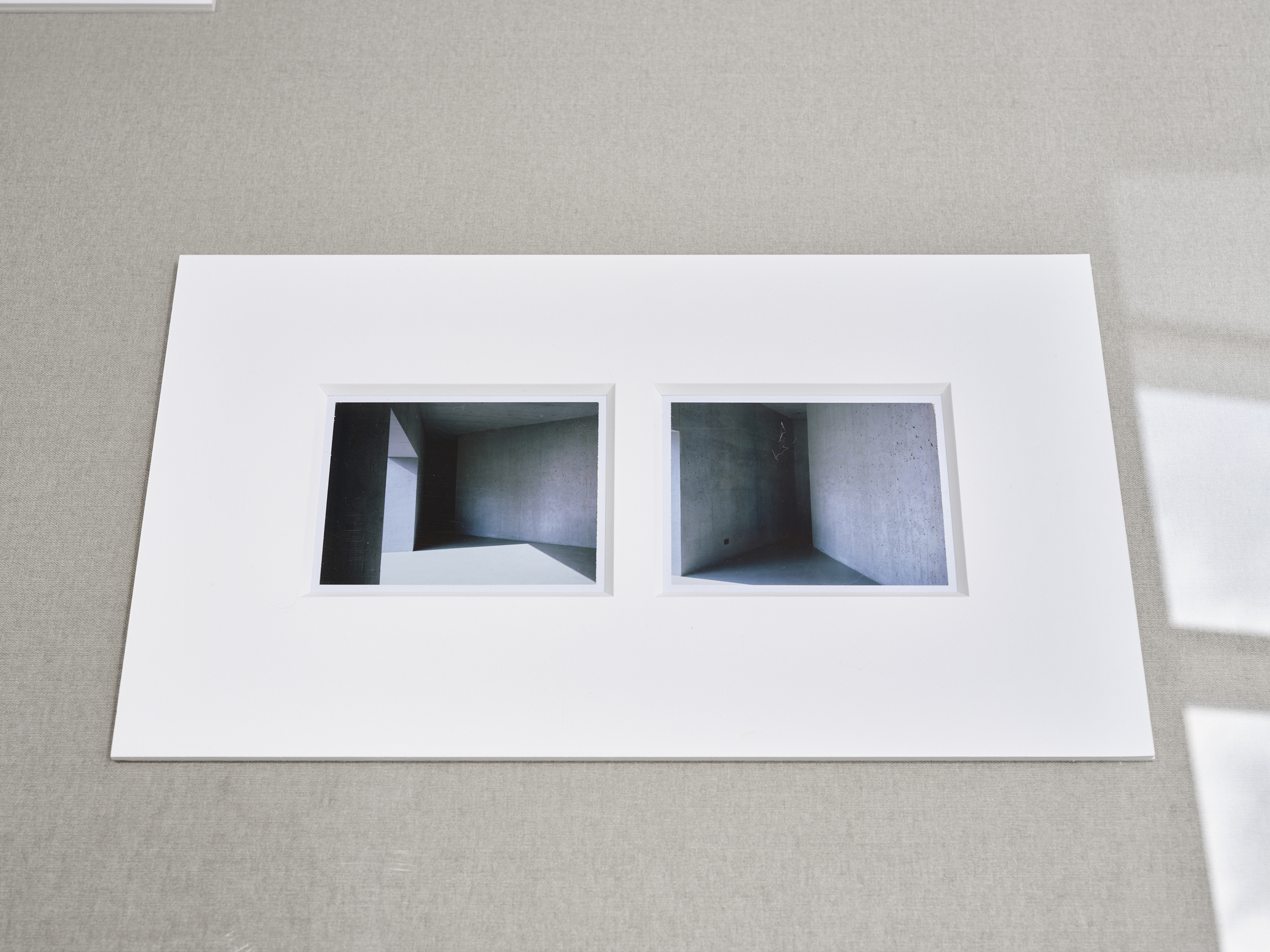
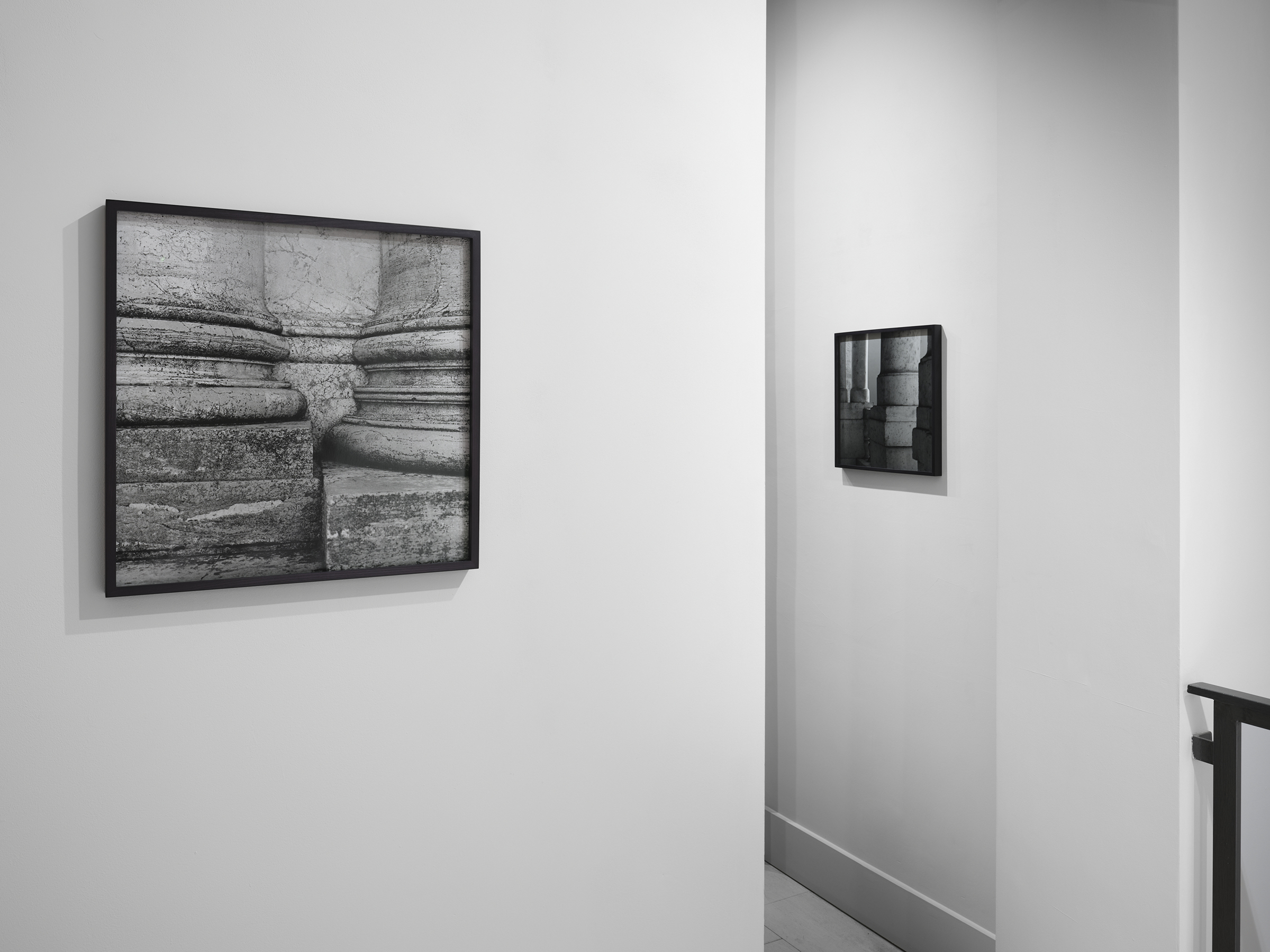
Hélène Binet: Oscillations
from Villa Saraceno to Lunuganga Garden
6 Dec—31 Jan 2025Oscillations is Hélène Binet’s second solo show at Large Glass. A newly commissioned text by Emily LaBarge accompanies the exhibition, an excerpt of which below:
There are lines straight and curved, sometimes both, or indeterminate, bulging here only to pursue an even course there, or take a gentle slope, or turn a corner, or overlap with other lines and shapes, straights and narrows, to form composite configurations, or breaking off here and there and then passing out of the frame somewhere into the distance where they may or may not continue, up or down, rounded or even, you choose. There is light and dark and lighter and darker and lightest and darkest, because, after all, this is what photography consists of, along with time and its passage — an eternal oscillation that shapes how and what we see.
A view inside a view, a door inside a door, a column behind a column behind a column bisecting an elegant arched doorway, exacting Renaissance proportions, sightlines from one side of a Palazzo to another, and then the other side to the other, as if presenting apertures within apertures for the aperture of the camera to close upon and seize. In Hélène Binet’s work, repetition, rhythm, sequence, and seriality are the order of the day, none of which are possible without the passage of time — and with it, light, ever the photographer’s loyal source. She refers to her projects, most of which take place in specific architectural locations, as essays, the form that is, in its best iterations, famously mobile, intuitive, wayward, proceeding slowly, with curiosity, according to a perceived logic that cannot be forced or quickened. It is, in short, akin to looking, hard, carefully, again and again, and waiting to see what happens.
Hélène Binet, born 1959 in Sorengo, Switzerland, lives in London.
Binet studied photography at the Instituto Europeo di Design in Rome. Over the past 40 years, she has travelled the world to photograph historic and contemporary buildings, as well as projects in the making. Her work has been exhibited at distinguished museums and institutions internationally, including the Salone del Mobile in Milan; Royal Academy of Arts in London; Power Station of Art, in Shanghai; Bauhaus Archive in Berlin and the 13th International Architecture Biennale di Venezia. She has produced a large number of books including the recently published ‘Hélène Binet’ by Marco Iuliano and Martino Stierli (Lund Humphries).
Binet is the recipient of the 2019 Ada Louise Huxtable Prize. She was made an Honorary Fellow of the Royal Institute of British Architects in 2007.
Emily LaBarge is a Canadian writer based in London. She is a regular contributor to the New York Times and 4Columns. Her first book, Dog Days, will be published in the UK by Peninsula Press in 2025.
There are lines straight and curved, sometimes both, or indeterminate, bulging here only to pursue an even course there, or take a gentle slope, or turn a corner, or overlap with other lines and shapes, straights and narrows, to form composite configurations, or breaking off here and there and then passing out of the frame somewhere into the distance where they may or may not continue, up or down, rounded or even, you choose. There is light and dark and lighter and darker and lightest and darkest, because, after all, this is what photography consists of, along with time and its passage — an eternal oscillation that shapes how and what we see.
A view inside a view, a door inside a door, a column behind a column behind a column bisecting an elegant arched doorway, exacting Renaissance proportions, sightlines from one side of a Palazzo to another, and then the other side to the other, as if presenting apertures within apertures for the aperture of the camera to close upon and seize. In Hélène Binet’s work, repetition, rhythm, sequence, and seriality are the order of the day, none of which are possible without the passage of time — and with it, light, ever the photographer’s loyal source. She refers to her projects, most of which take place in specific architectural locations, as essays, the form that is, in its best iterations, famously mobile, intuitive, wayward, proceeding slowly, with curiosity, according to a perceived logic that cannot be forced or quickened. It is, in short, akin to looking, hard, carefully, again and again, and waiting to see what happens.
Hélène Binet, born 1959 in Sorengo, Switzerland, lives in London.
Binet studied photography at the Instituto Europeo di Design in Rome. Over the past 40 years, she has travelled the world to photograph historic and contemporary buildings, as well as projects in the making. Her work has been exhibited at distinguished museums and institutions internationally, including the Salone del Mobile in Milan; Royal Academy of Arts in London; Power Station of Art, in Shanghai; Bauhaus Archive in Berlin and the 13th International Architecture Biennale di Venezia. She has produced a large number of books including the recently published ‘Hélène Binet’ by Marco Iuliano and Martino Stierli (Lund Humphries).
Binet is the recipient of the 2019 Ada Louise Huxtable Prize. She was made an Honorary Fellow of the Royal Institute of British Architects in 2007.
Emily LaBarge is a Canadian writer based in London. She is a regular contributor to the New York Times and 4Columns. Her first book, Dog Days, will be published in the UK by Peninsula Press in 2025.
︎︎︎ ︎︎︎
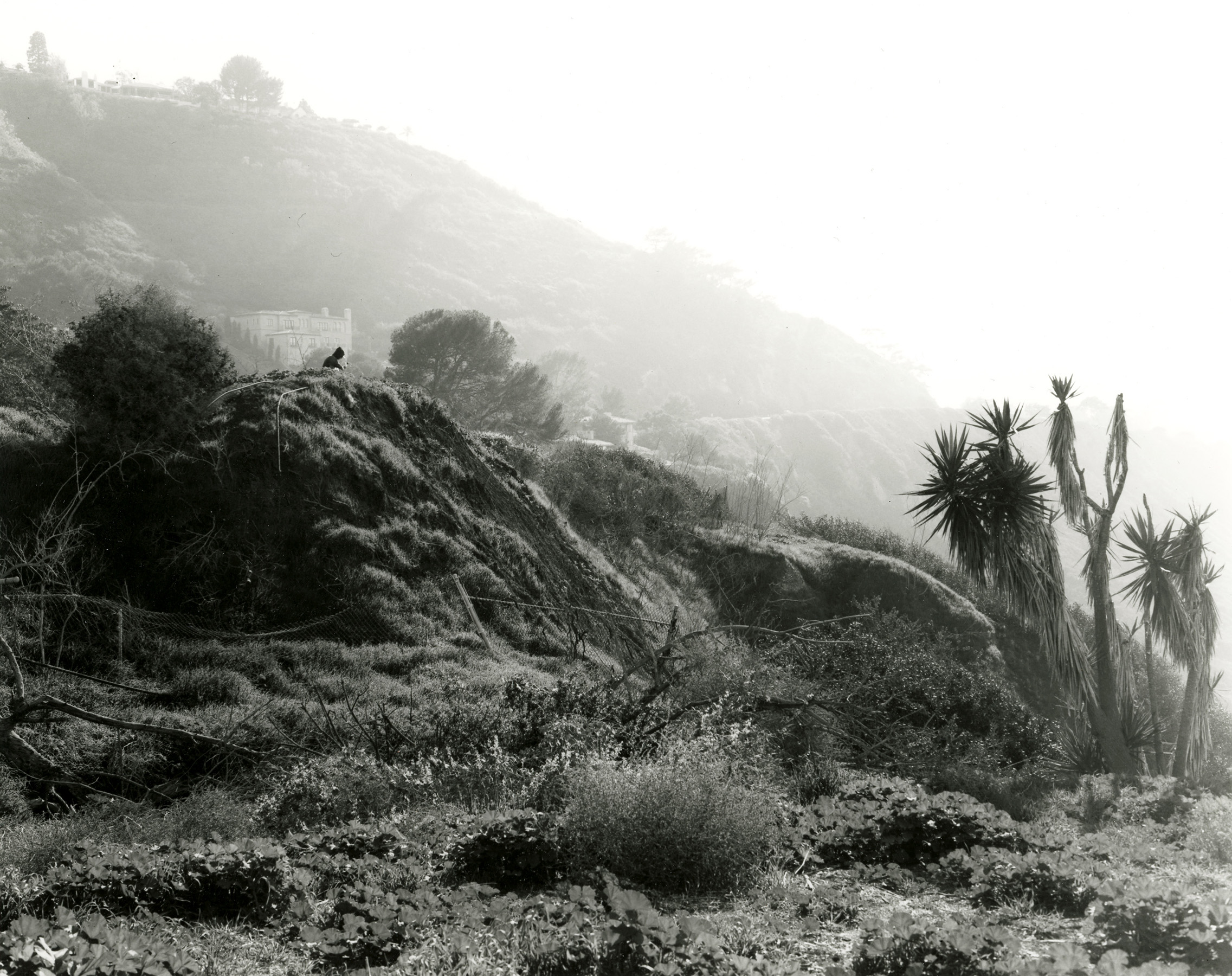

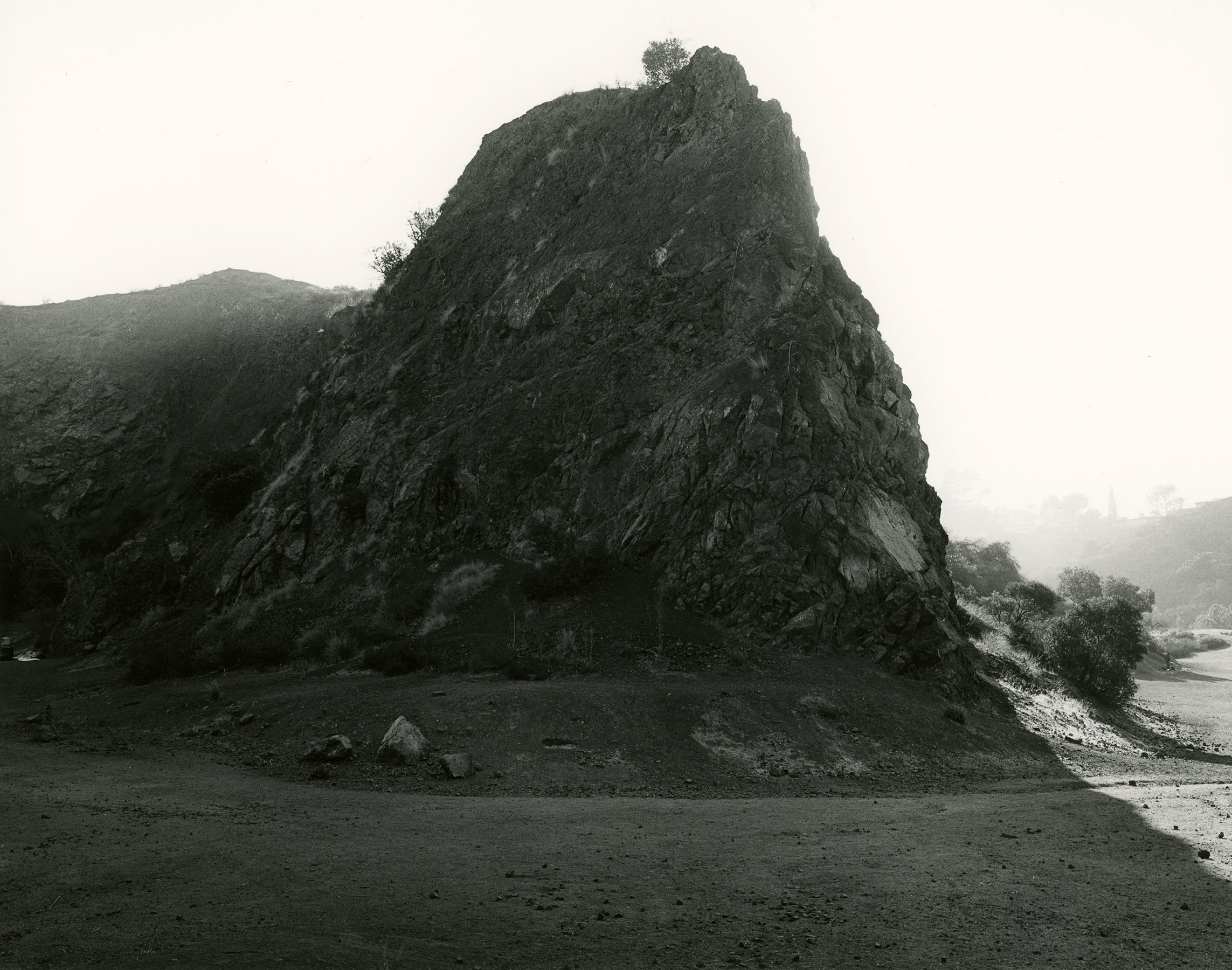
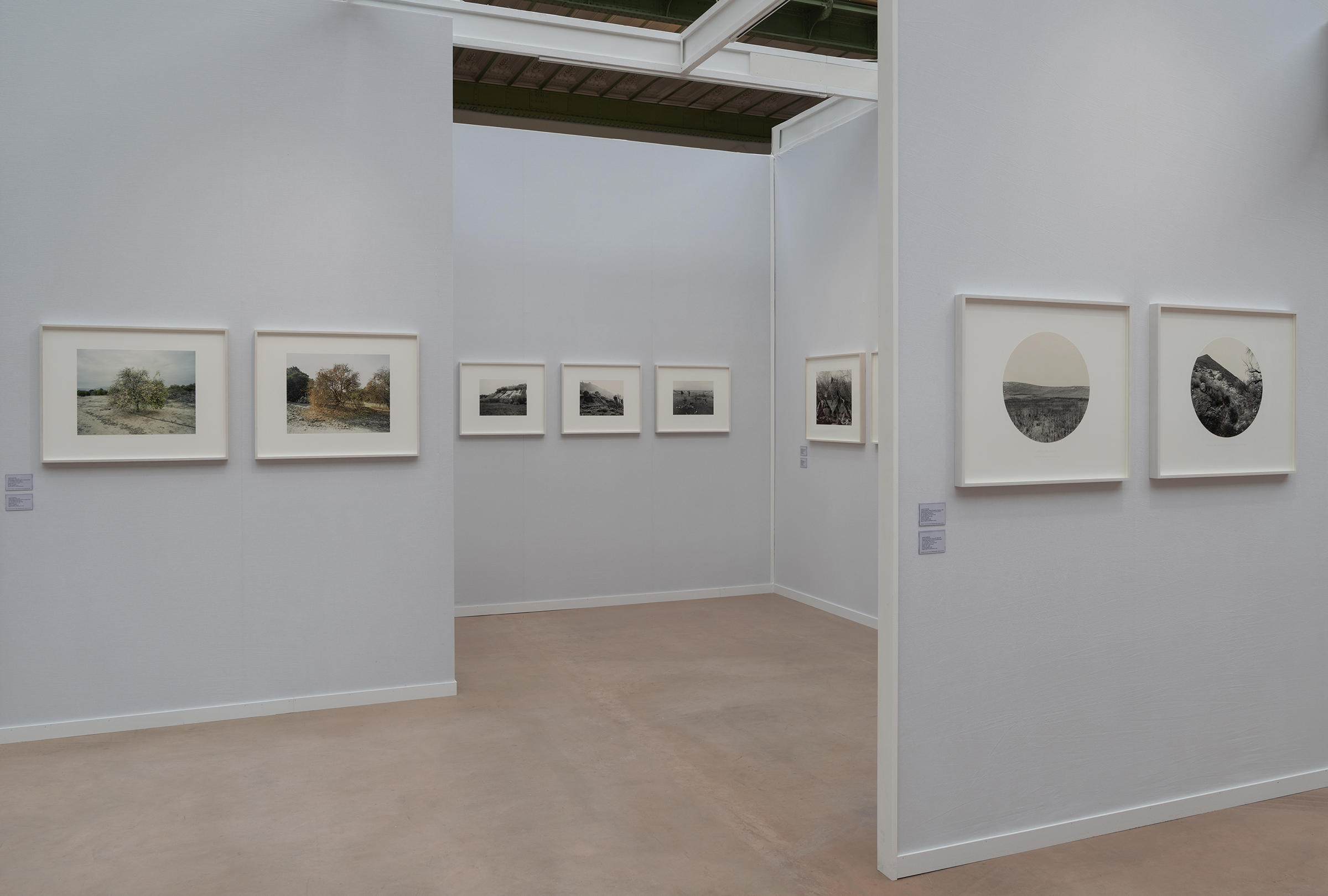
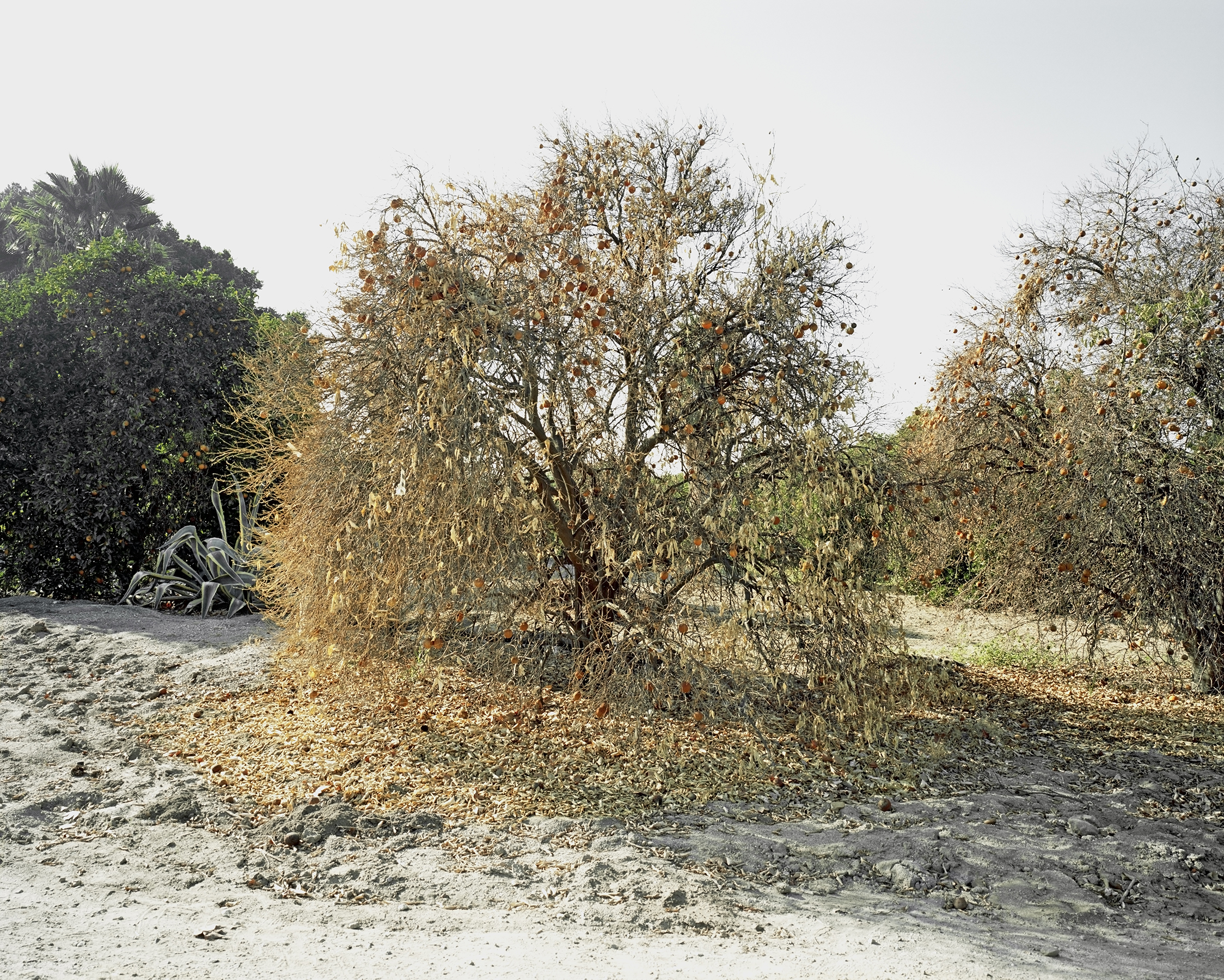
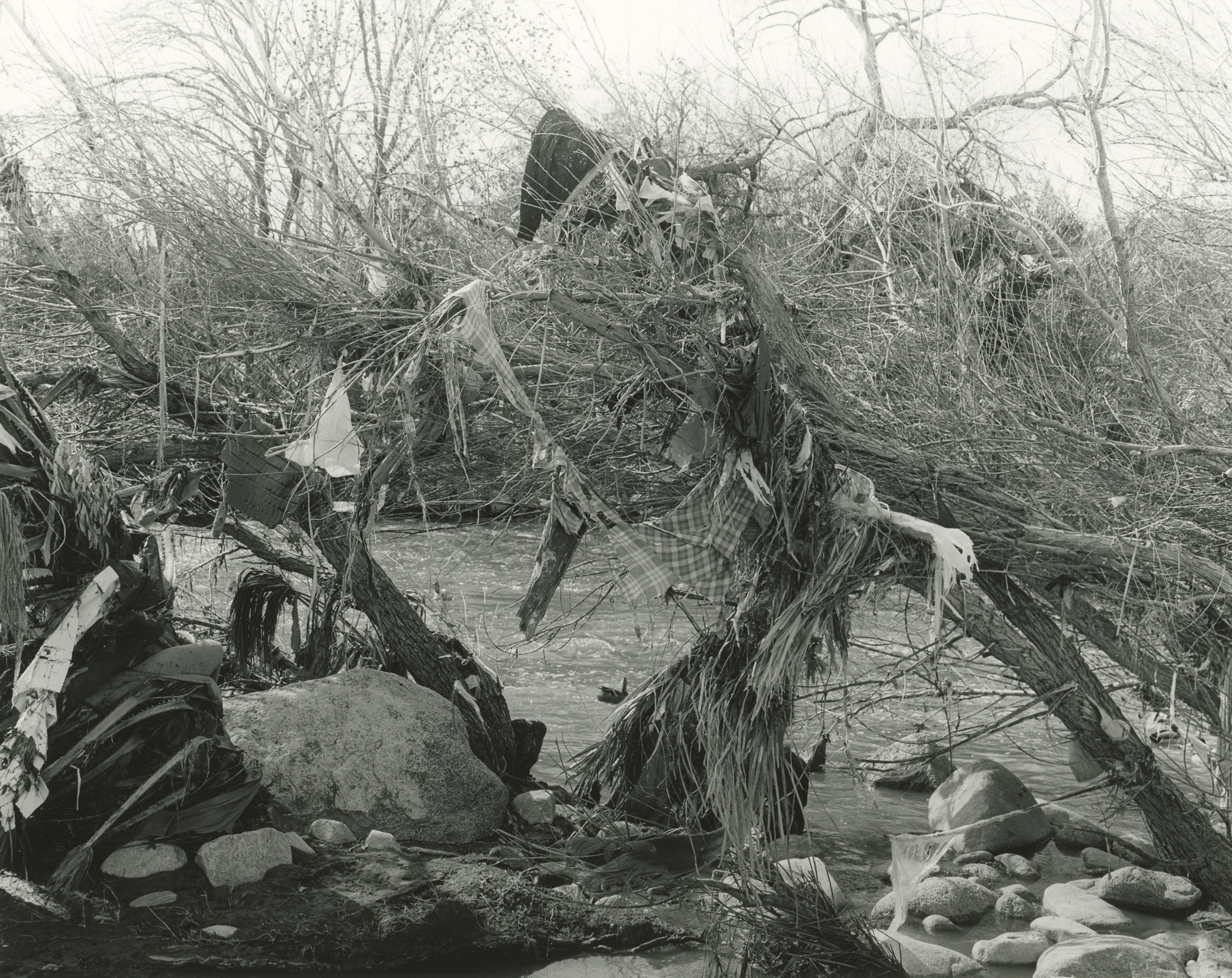
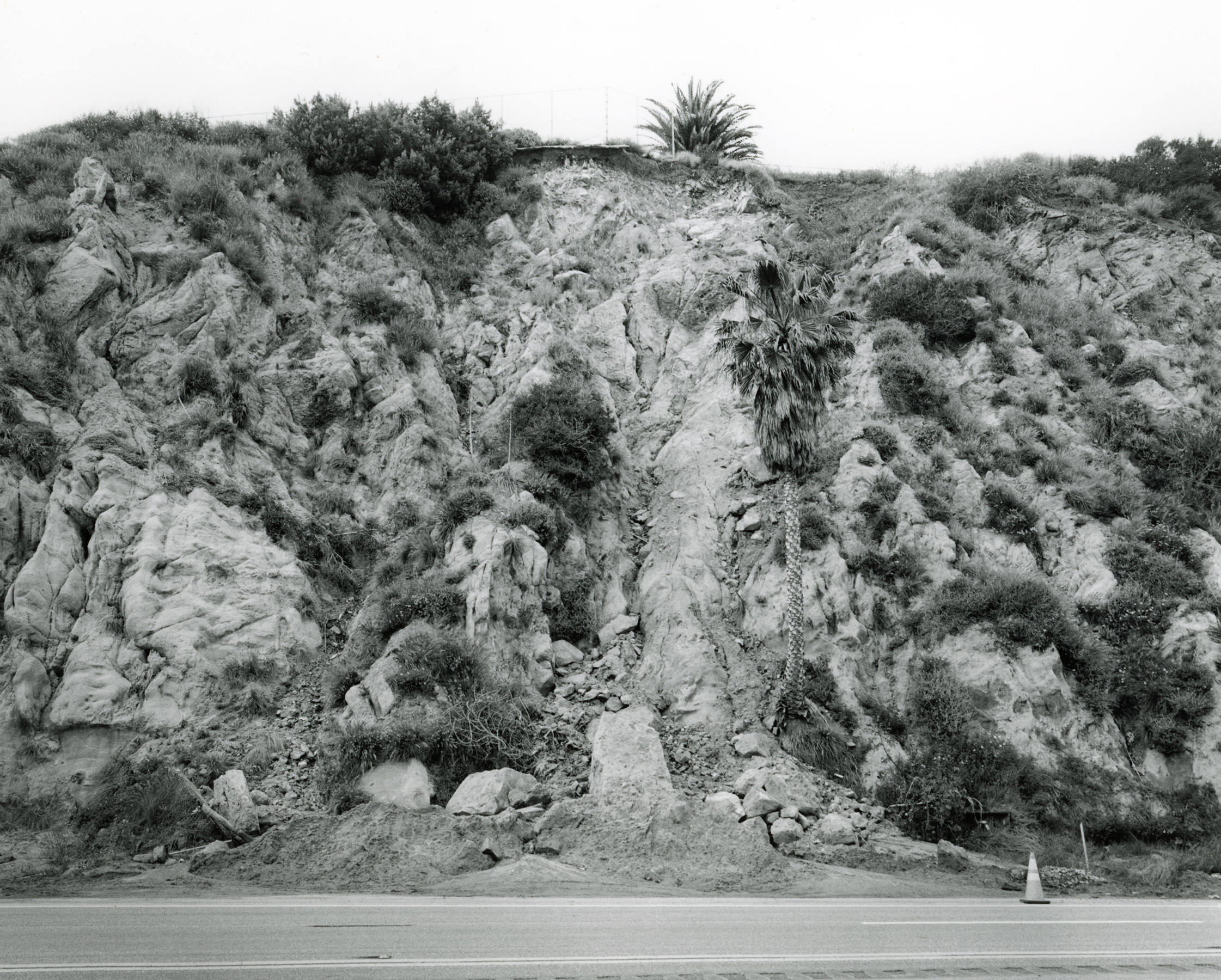
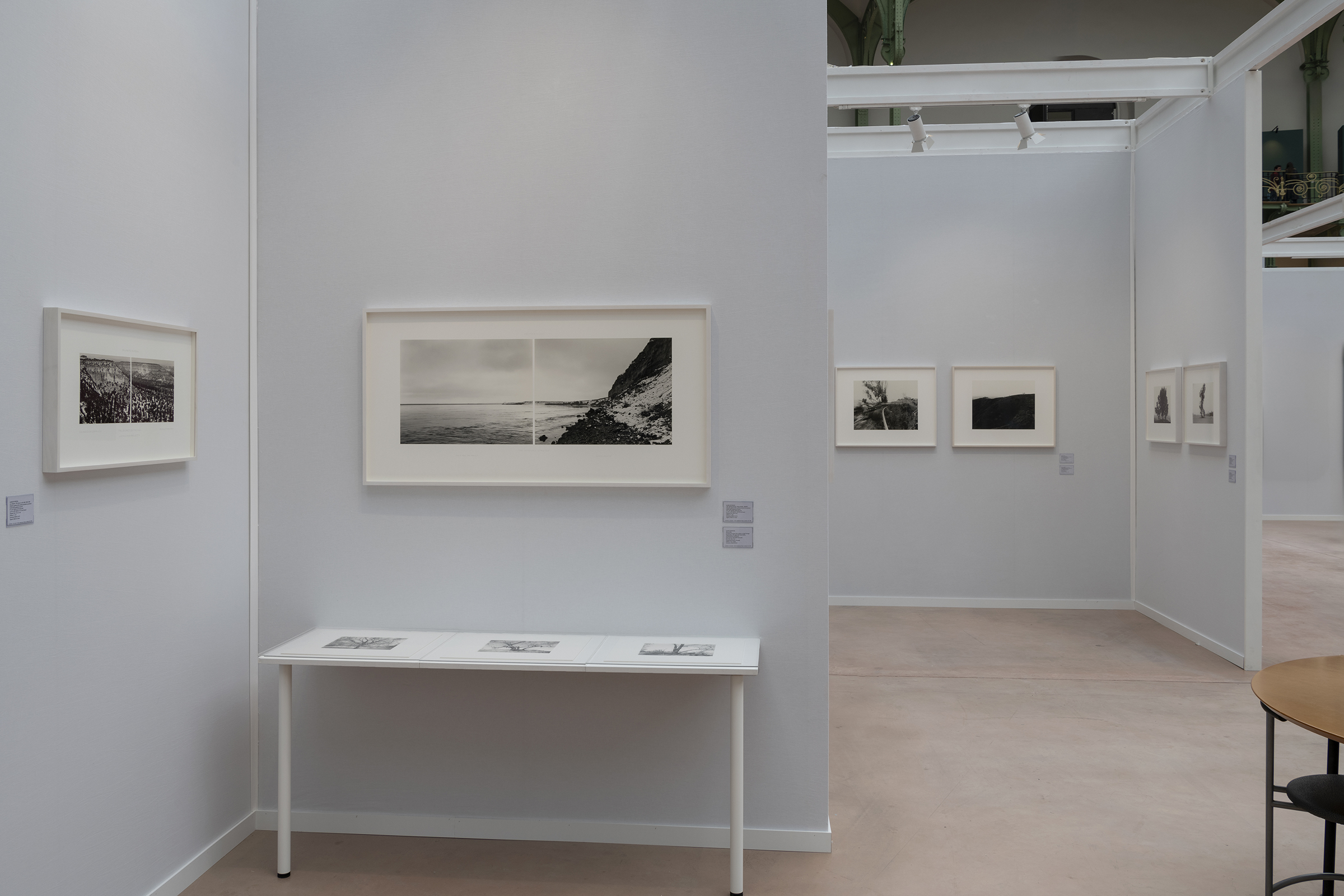
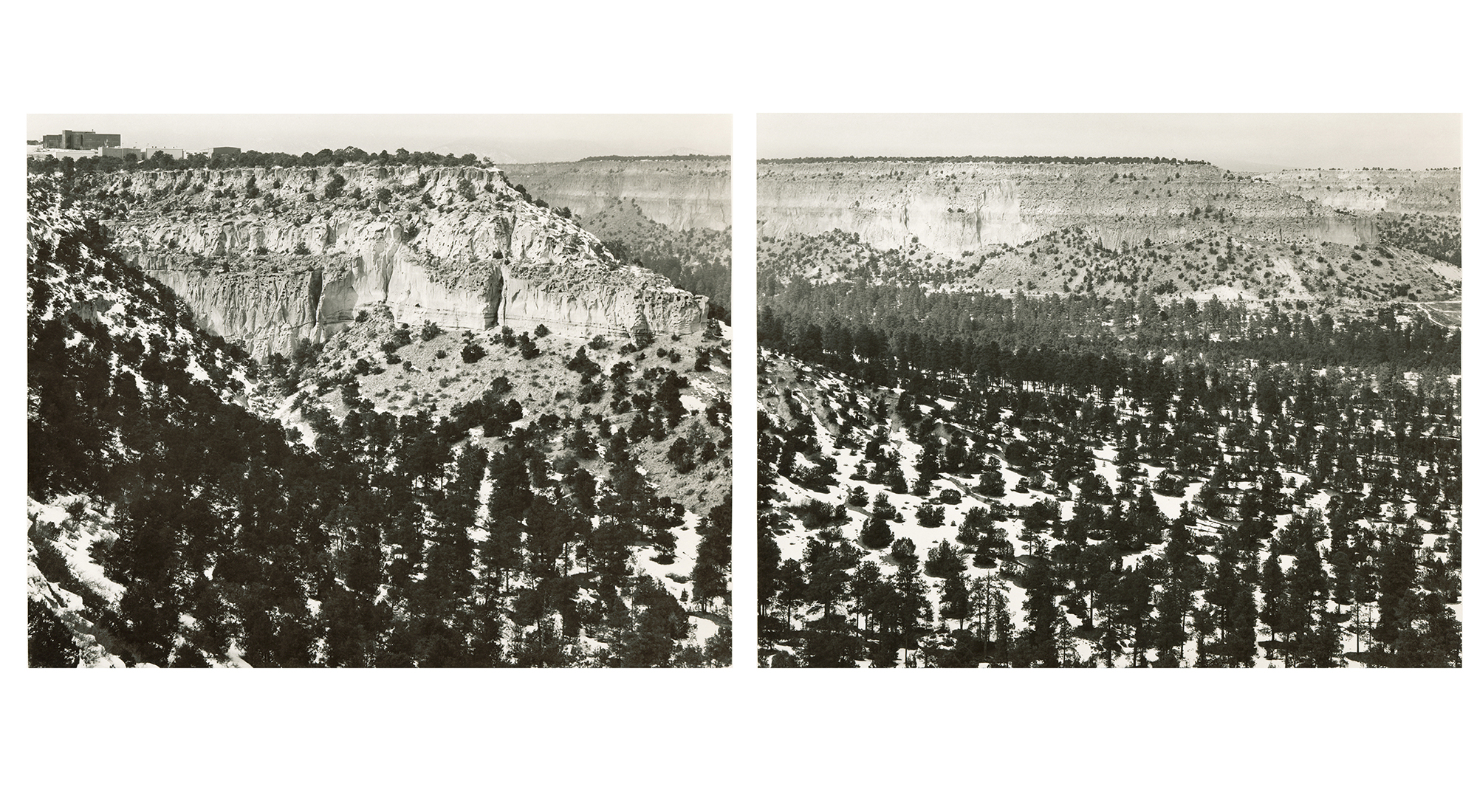
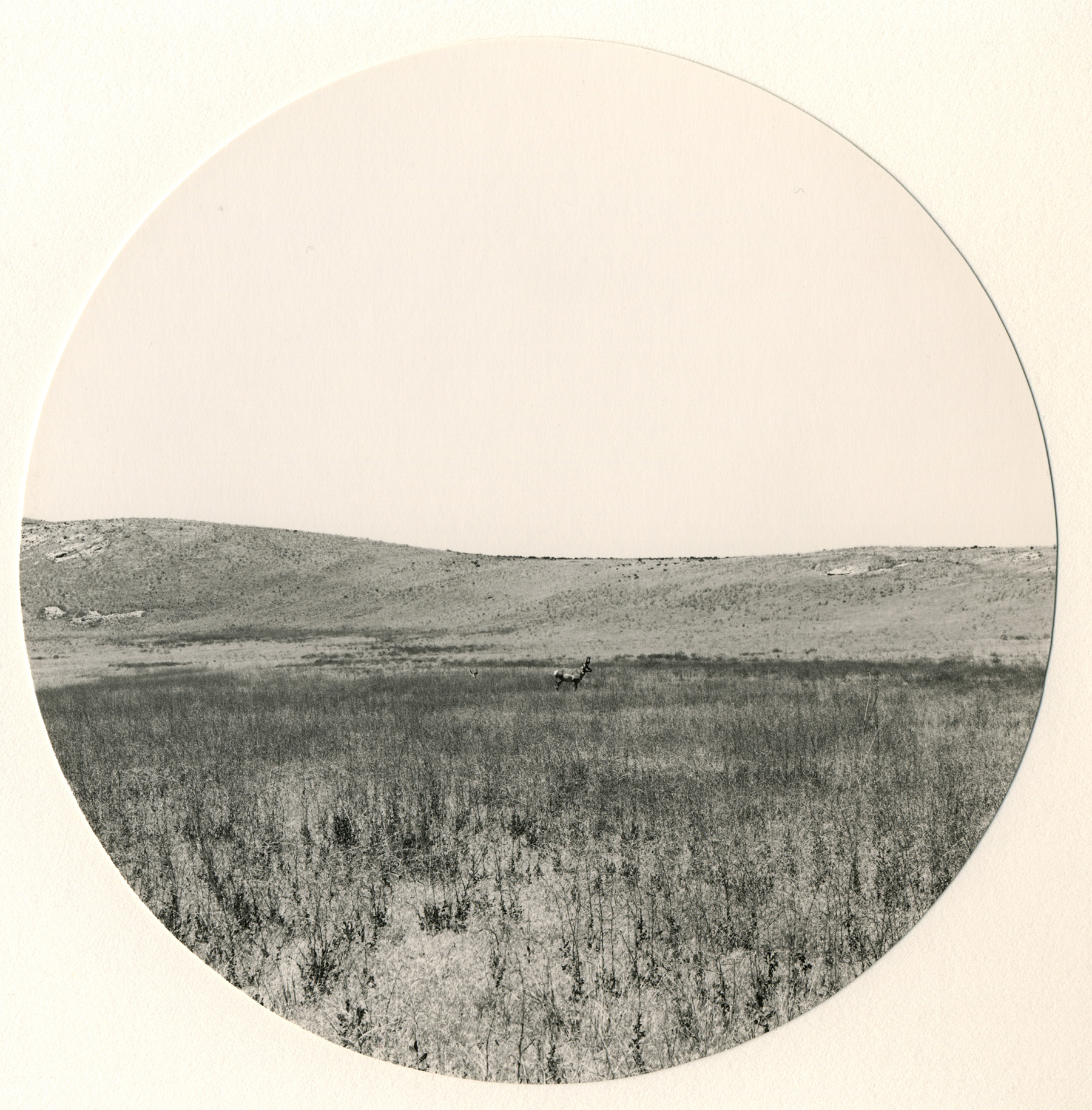
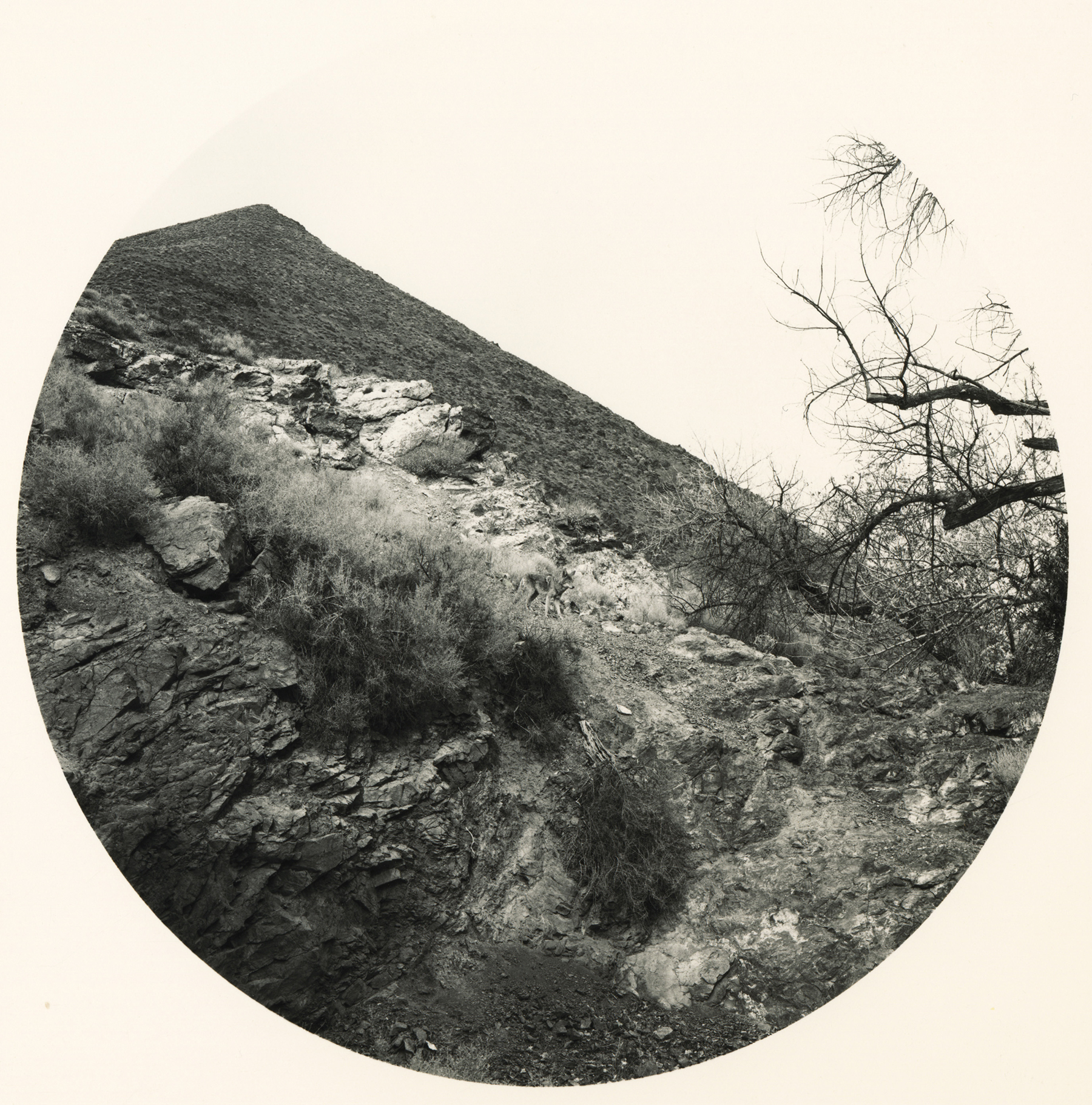
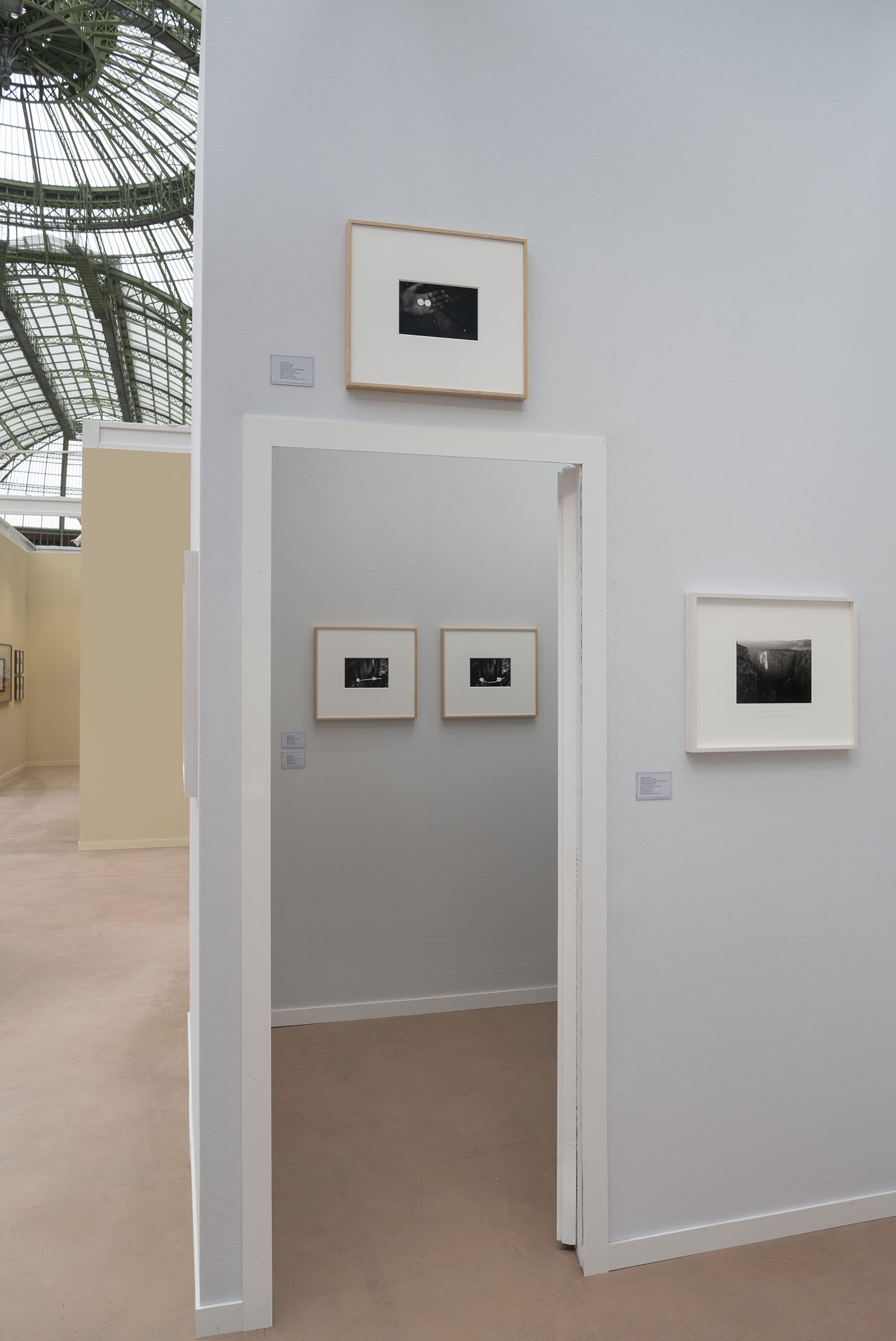
Paris Photo 2024
Main Sector, Booth B11
7 – 10 November 2024
Preview Day 6 November (invitation only)
Grand Palais
3 avenue du Général Eisenhower
75008 Paris
www.parisphoto.com
For Paris Photo 2024, Large Glass presents a solo show of works by American photographer Mark Ruwedel. We spotlight Ruwedel’s on-going project ‘Los Angeles: Landscapes of Four Ecologies’ (2014- ) with the title making reference to British architectural critic Reyner Banham’s 1971 book, Los Angeles: The Architecture of Four Ecologies).
For three decades, Mark Ruwedel has photographed American deserts and wild spaces that bear traces of human intervention: abandoned remains of early railway lines, brightly sinister nuclear test sites, ruined desert homes outside Los Angeles. “I have come to think of the land as being an enormous historical archive,” he wrote in 1996. “I am interested in revealing the narratives contained within the landscape, especially those places where the land reveals itself as being both an agent of change and the field of human endeavour.”
For the Project, Ruwedel has identified four overlapping landscape ‘systems’: The Rivers, The Eastern Edge, The Hills and Canyons, and The Western Edge. His work captures the dynamic landscapes of the greater LA metropolitan area, shaped by floods, fires, earthquakes and landslides; a place overwritten by industry, irrigation, urban planning and abiding fantasies about authentic wilderness.
Mark Ruwedel has won numerous awards for this outstanding work, including the Scotiabank Photography Award and a Guggenheim Fellowship (both 2014). He was shortlisted for the Deutsche Börse Photography Foundation Prize (2019) and for the Prix Pictet (2021). His work is included in major museum collections including those of the Los Angeles County Art Museum (Los Angeles), The Metropolitan Museum (New York), National Gallery of Art (Washington), The National Gallery (Canada); Stichting Foundation (Brussels), Maison Européenne de la Photographie (Paris), Tate Modern and the Victoria and Albert Museum (London).
For three decades, Mark Ruwedel has photographed American deserts and wild spaces that bear traces of human intervention: abandoned remains of early railway lines, brightly sinister nuclear test sites, ruined desert homes outside Los Angeles. “I have come to think of the land as being an enormous historical archive,” he wrote in 1996. “I am interested in revealing the narratives contained within the landscape, especially those places where the land reveals itself as being both an agent of change and the field of human endeavour.”
For the Project, Ruwedel has identified four overlapping landscape ‘systems’: The Rivers, The Eastern Edge, The Hills and Canyons, and The Western Edge. His work captures the dynamic landscapes of the greater LA metropolitan area, shaped by floods, fires, earthquakes and landslides; a place overwritten by industry, irrigation, urban planning and abiding fantasies about authentic wilderness.
Mark Ruwedel has won numerous awards for this outstanding work, including the Scotiabank Photography Award and a Guggenheim Fellowship (both 2014). He was shortlisted for the Deutsche Börse Photography Foundation Prize (2019) and for the Prix Pictet (2021). His work is included in major museum collections including those of the Los Angeles County Art Museum (Los Angeles), The Metropolitan Museum (New York), National Gallery of Art (Washington), The National Gallery (Canada); Stichting Foundation (Brussels), Maison Européenne de la Photographie (Paris), Tate Modern and the Victoria and Albert Museum (London).
︎︎︎ ︎︎︎

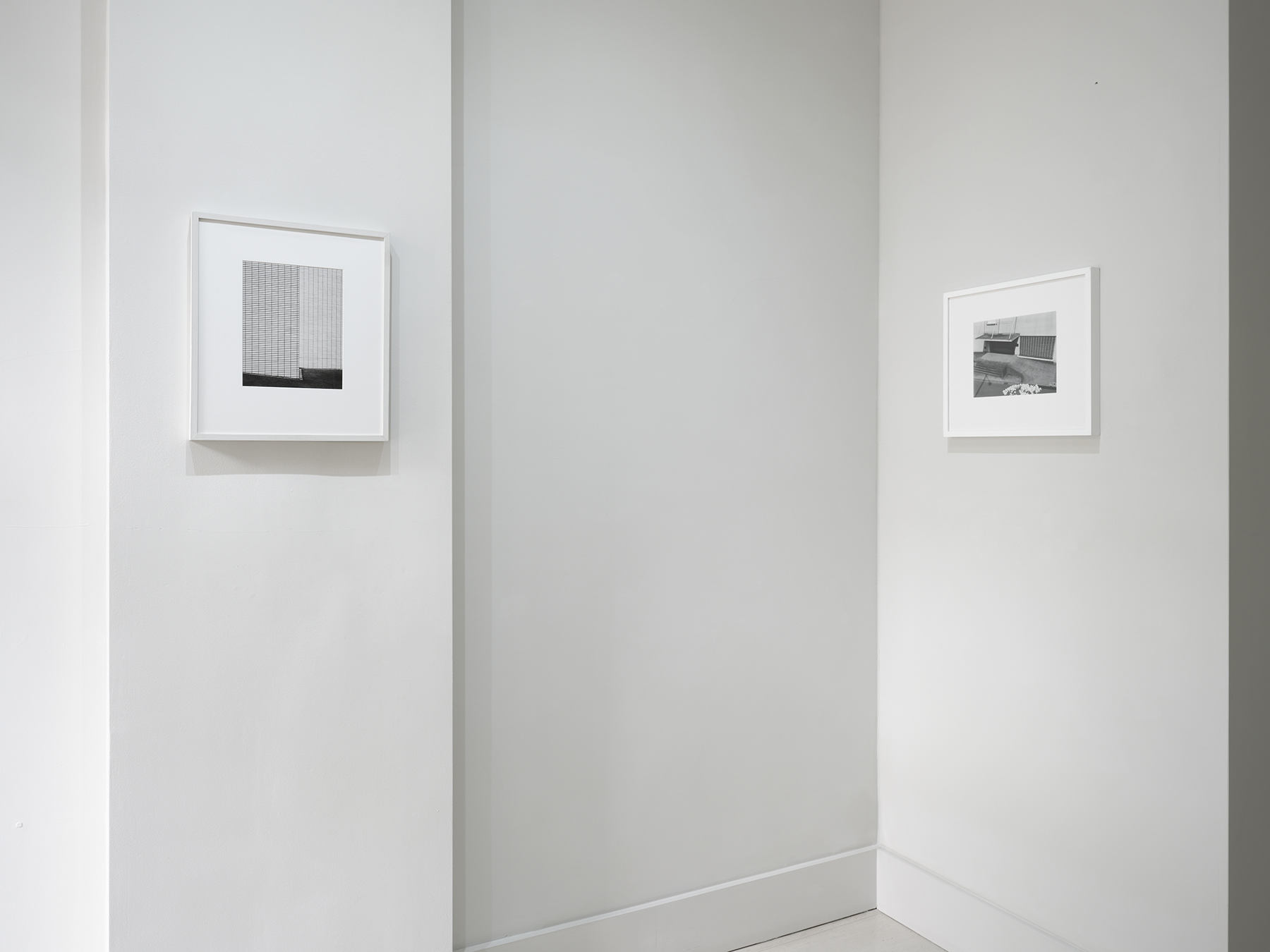
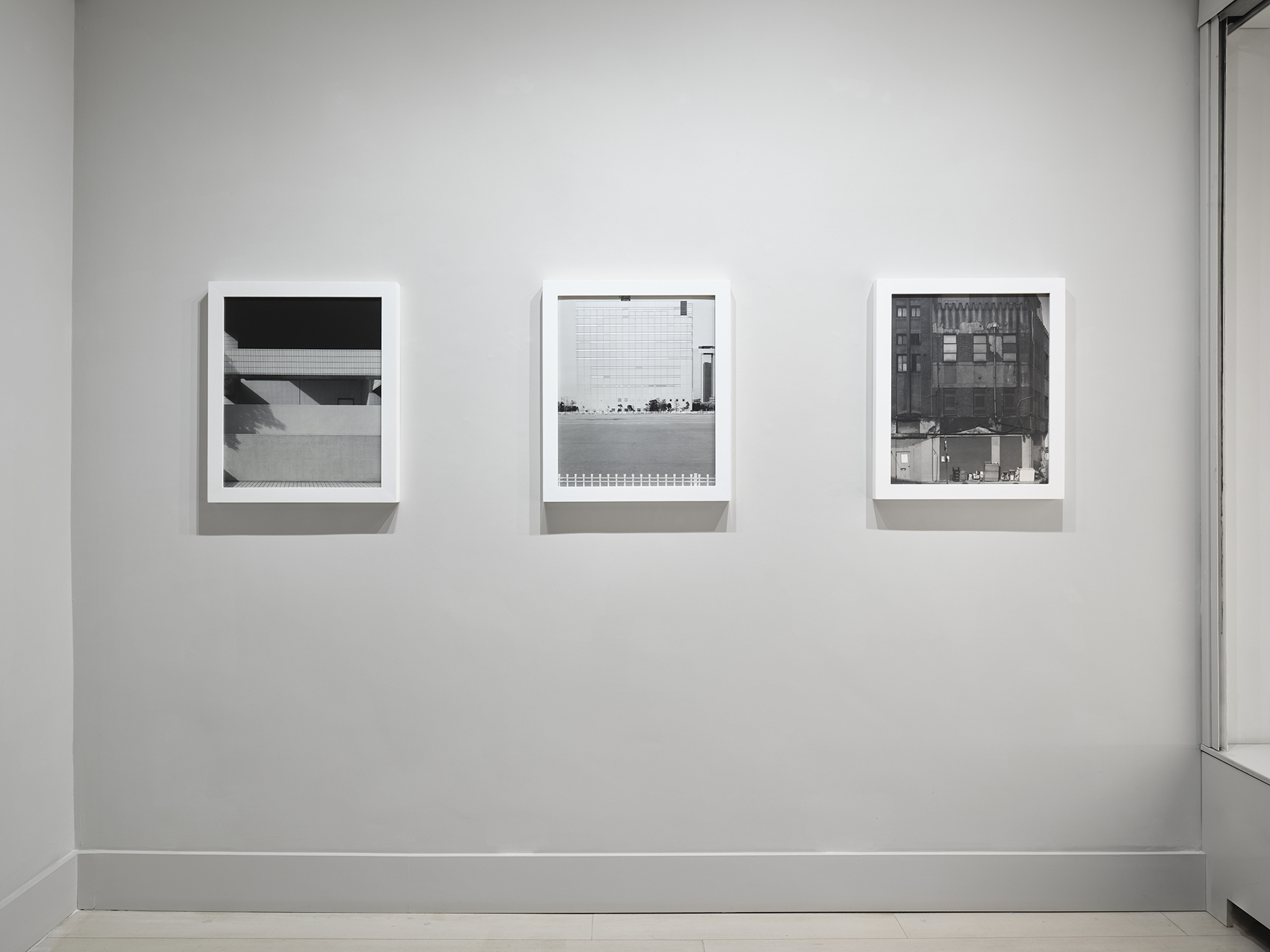
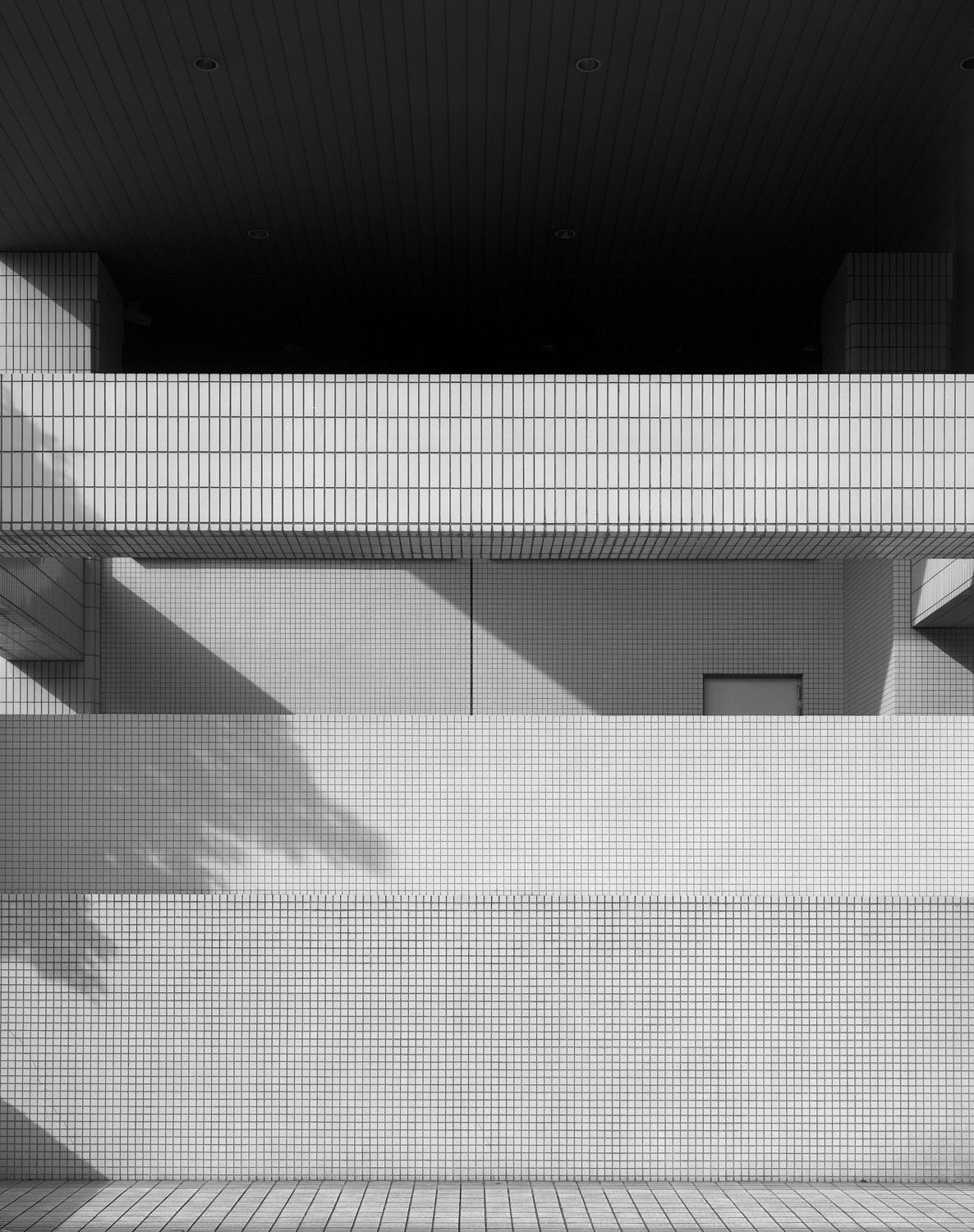

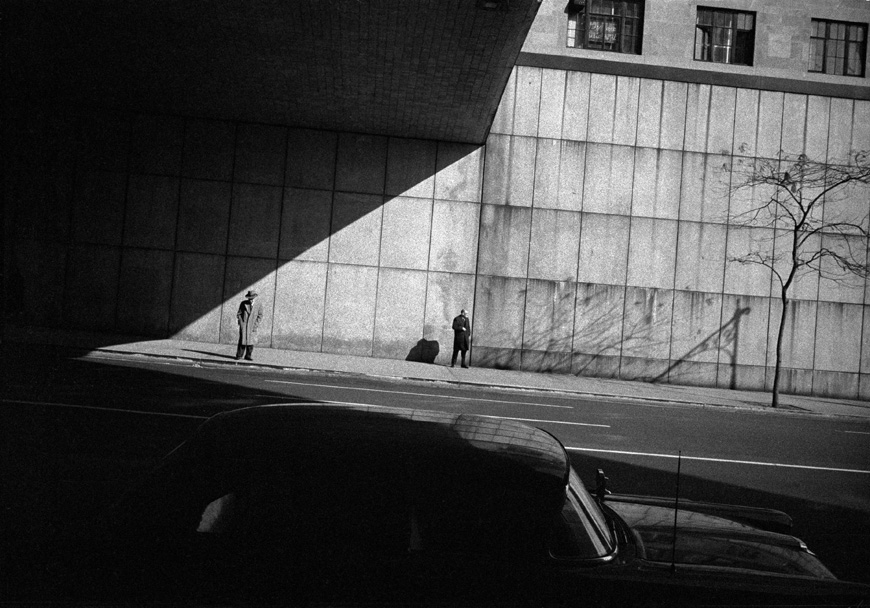
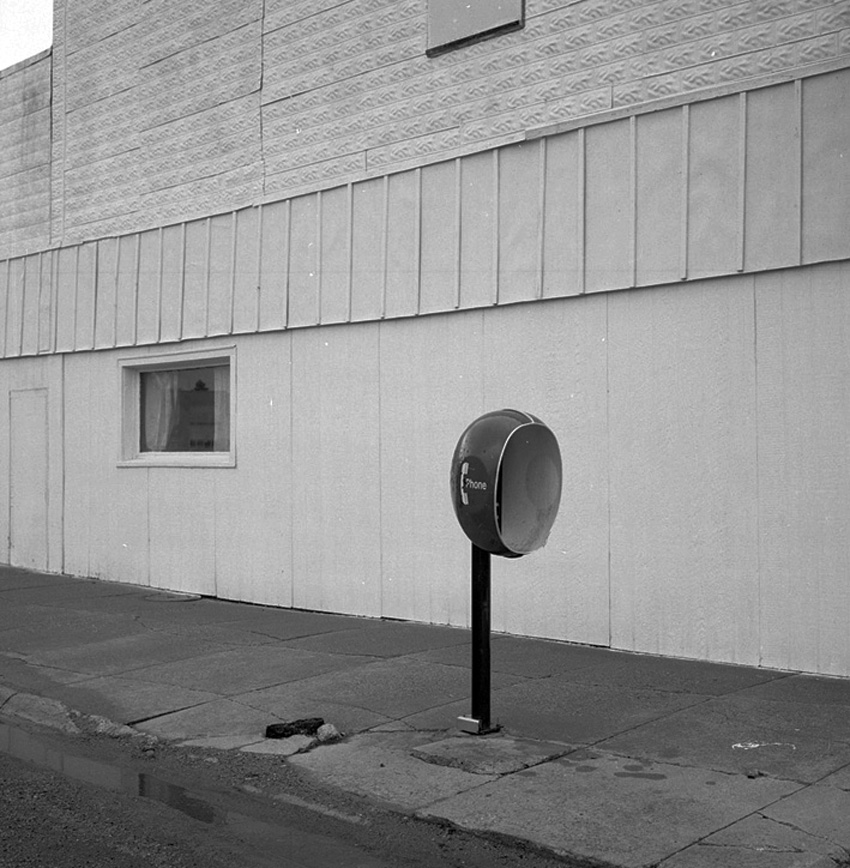
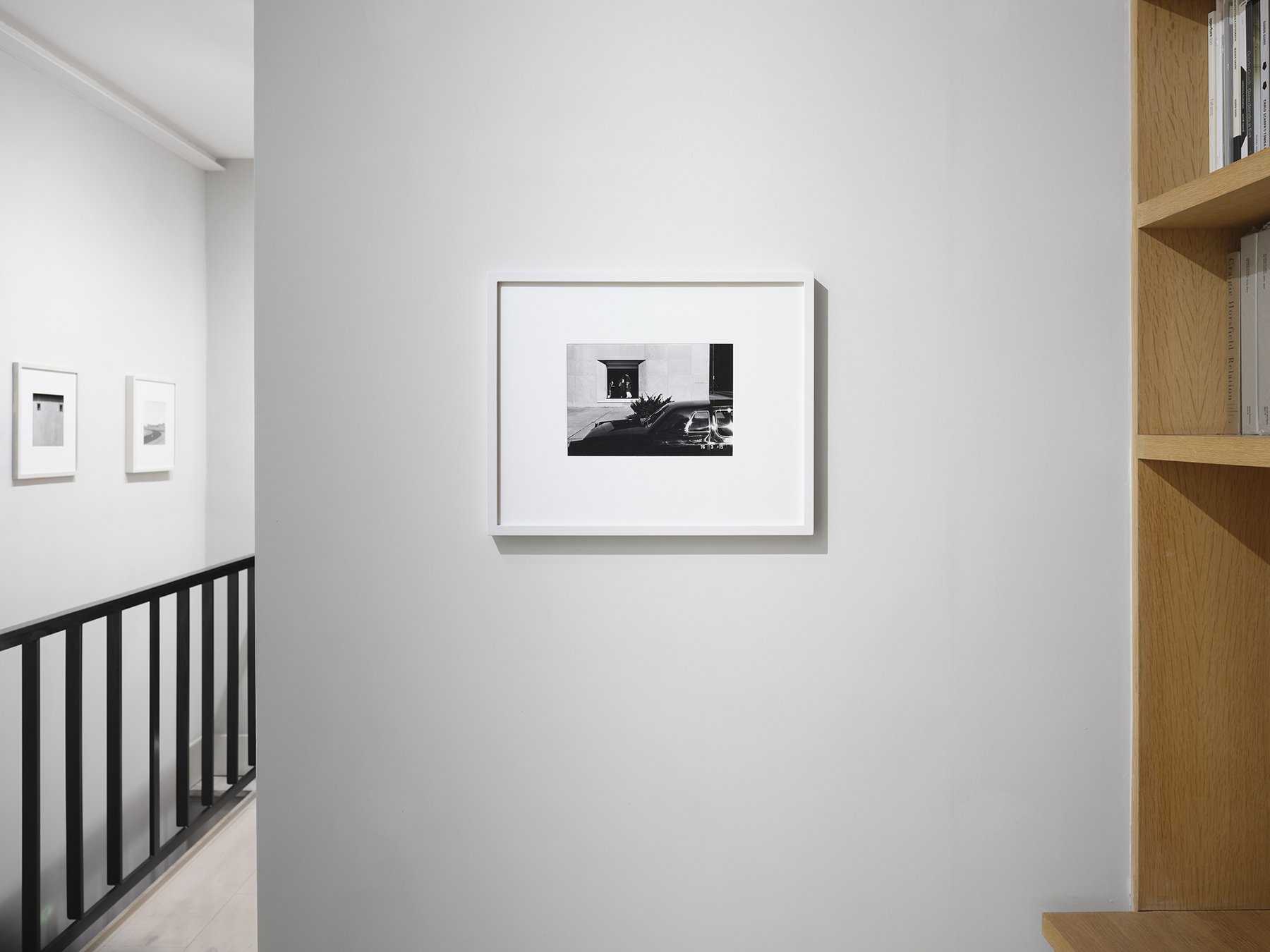
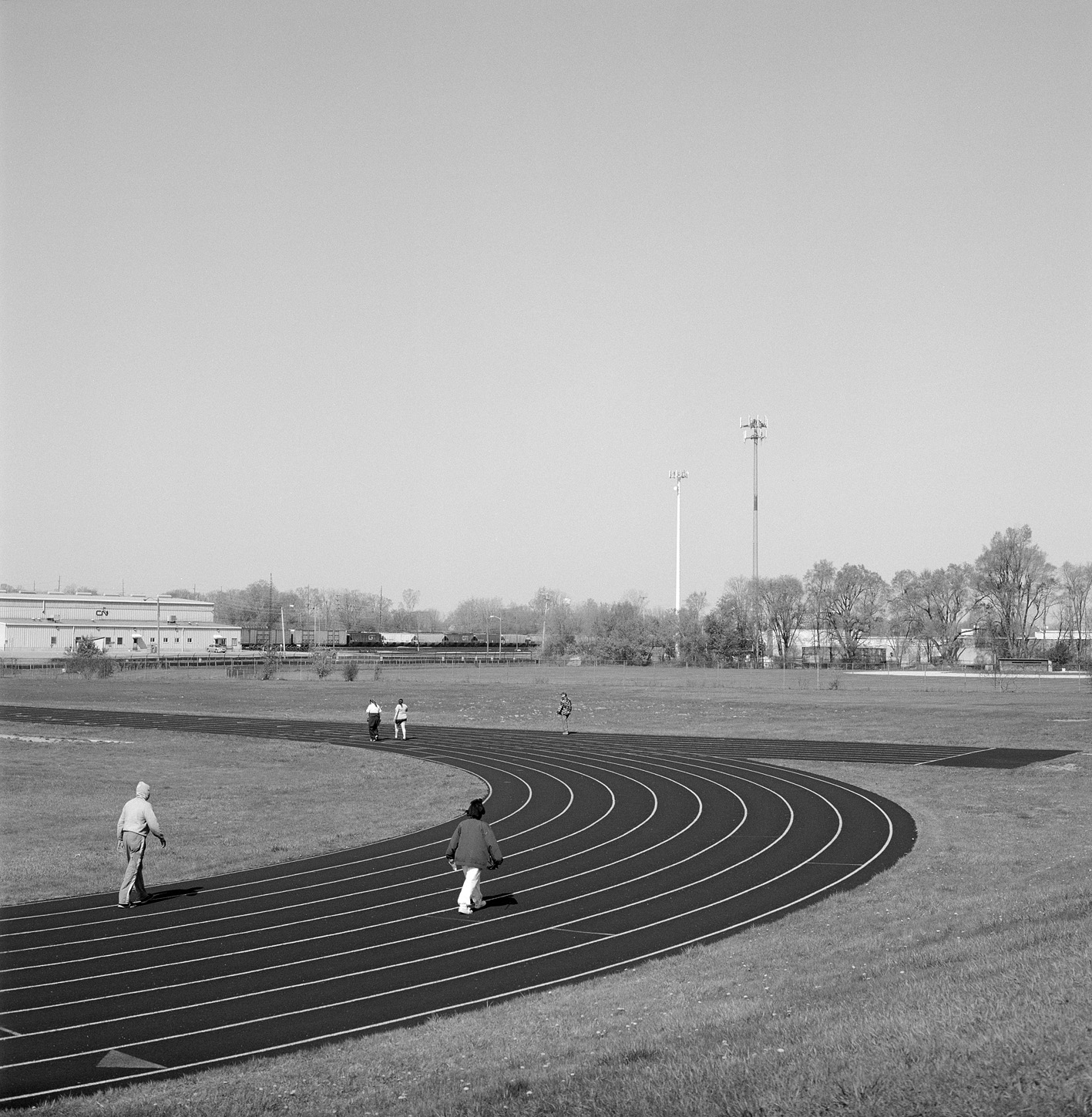
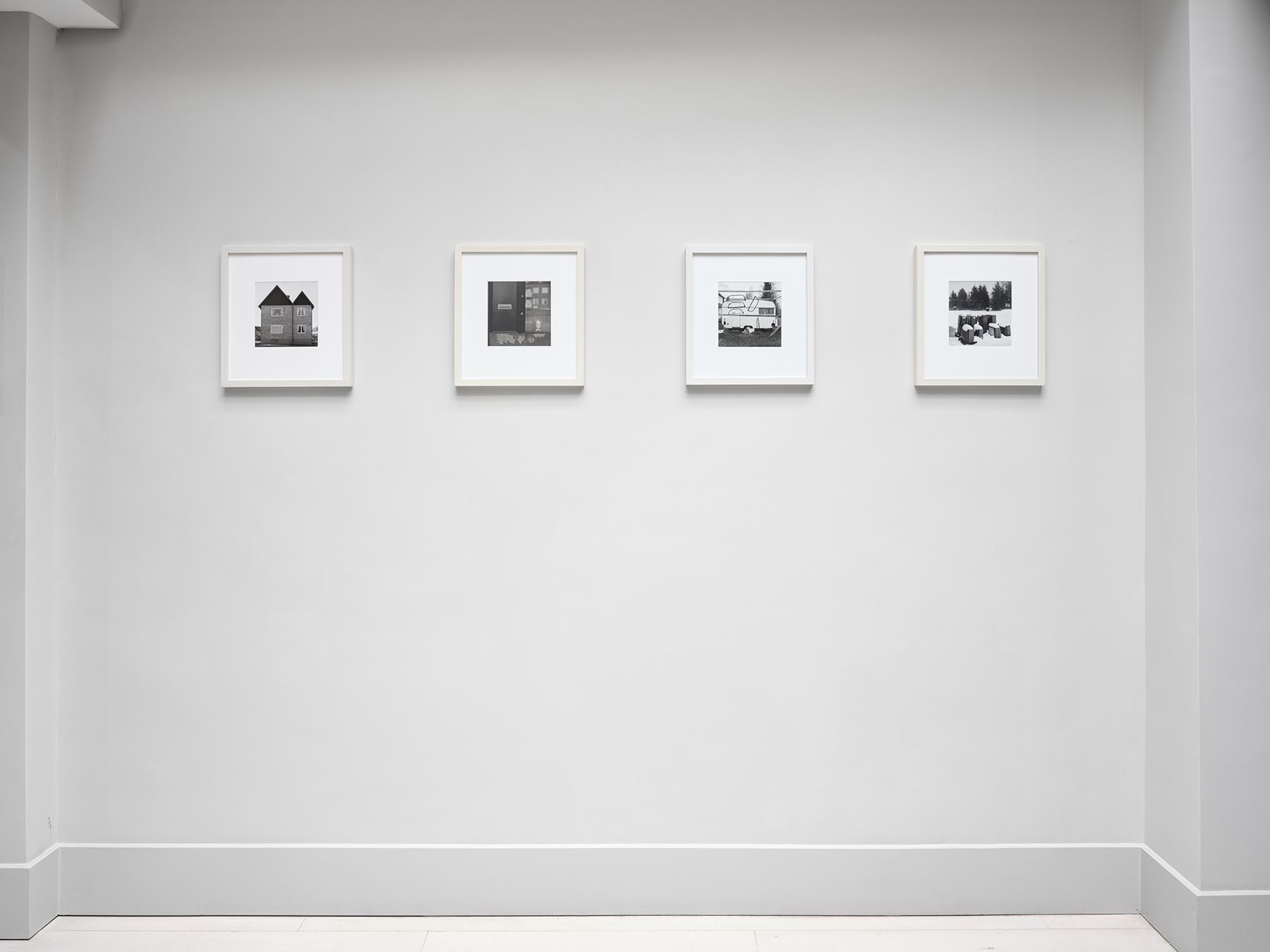


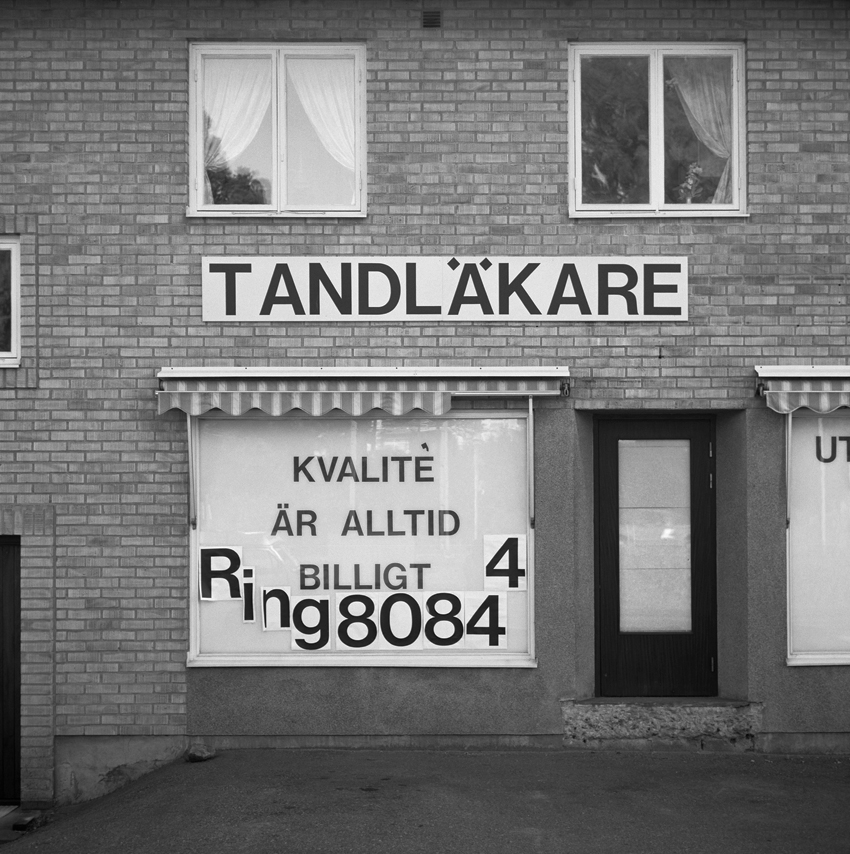

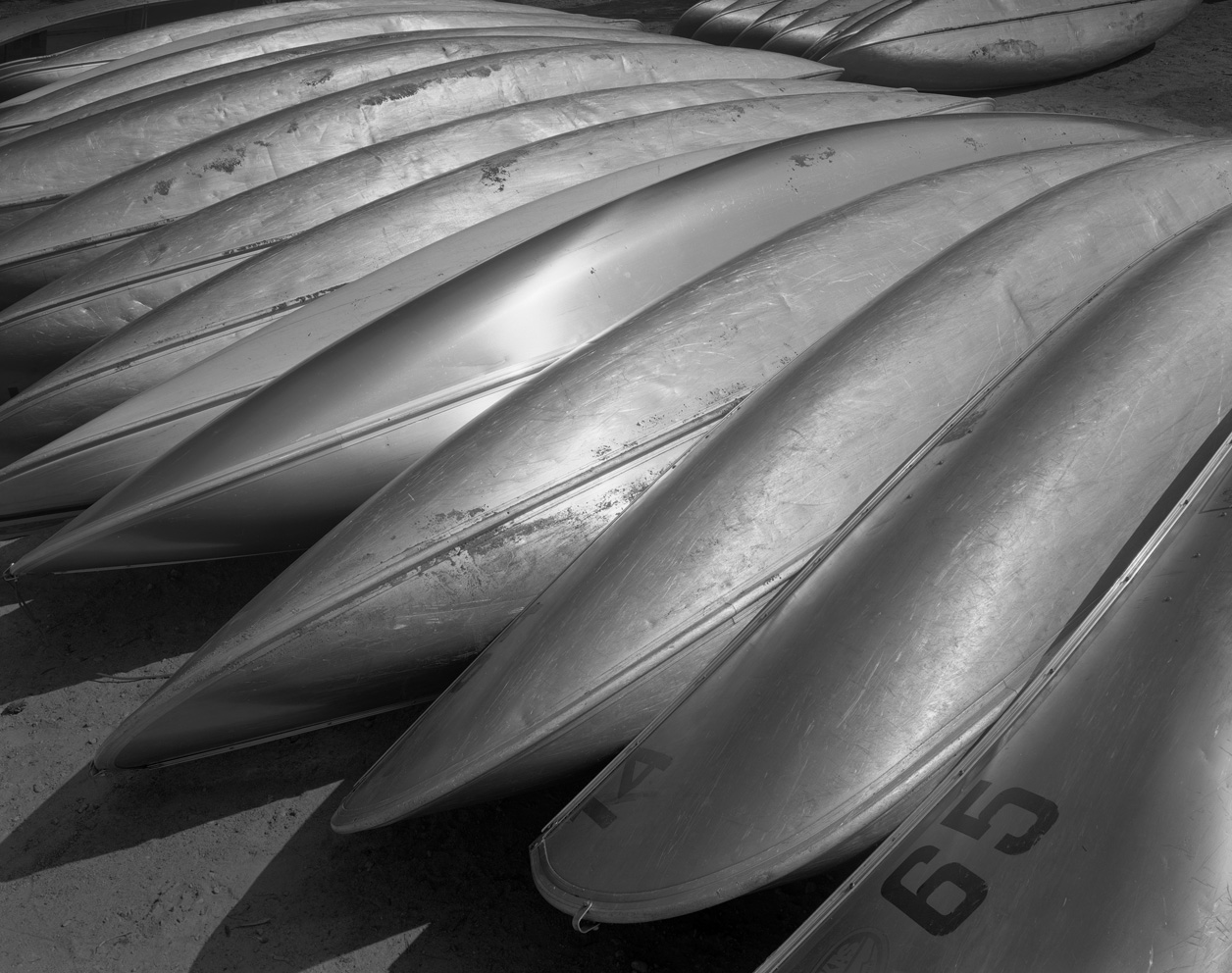
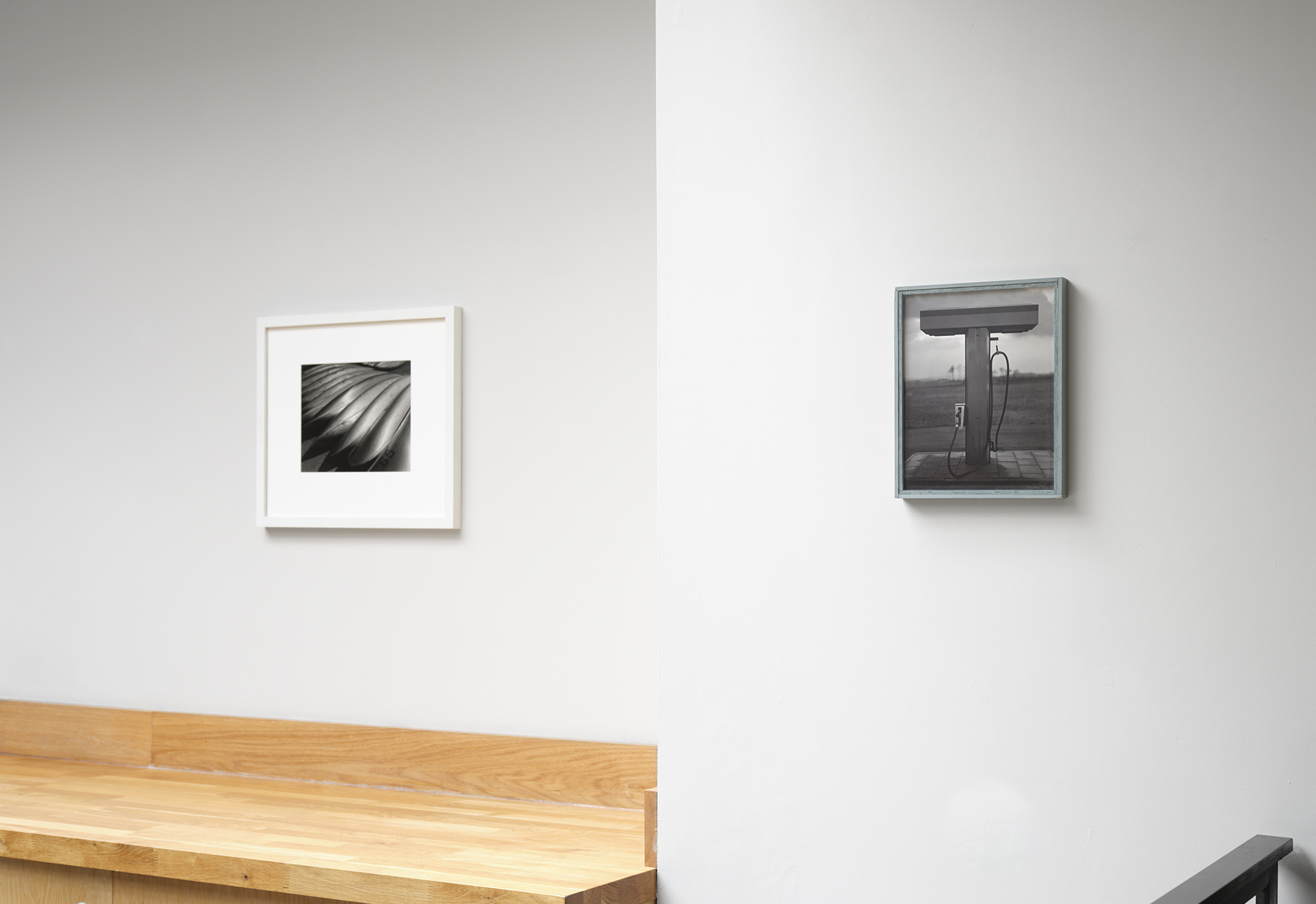

Gerry Johansson:
In Plain View
20 Sep—2 Nov 2024In Plain View is the first solo show of renowned Swedish photographer Gerry Johansson in London and we have selected 30 exceptional photographs that span the six decades of his career.
“There are several common denominators found throughout Gerry Johansson’s work that become apparent with even casual viewing” writes Jeffrey Ladd in the accompanying text. “Some of those shared characteristics are obvious at first glance, for instance; the physicality of several of Johansson's books and exhibition print sizes, the apparent use of traditional analog materials; while other traits like the sense of stillness, the seeming perpetual daylight, and the camera's steady almost drone-like orientation to the world set an underlying commonality. Perhaps a trait most recognizable is his choice of working primarily in black and white. Black and white photography has its way of automatically referencing the distant past and many photographers question its use considering the ease of the color processes today but Johansson's explanation for the choice rings honest and unpretentious, linked not with an artistic "strategy," but with choices informed by the pleasures of perception.
What I find refreshing about Johansson's work is the sense one feels of his enjoyment of moving through an unfamiliar landscape and simply taking in what is before him. The work seems formed not in the mind first, but through the physical footsteps he takes and directness at which he looks. This is not unique to Johansson by any stretch, but the sense of solitude and fullness of his frames are a reward for those who pause and look.”
Gerry Johansson, born 1945 in Örebro, lives in Höganäs, Sweden. Johansson studied graphic design in Gothenburg in the late 1960s. His work has been exhibited at distinguished museums and institutions internationally, including the Kunsthalle Rostock in Germany; Museum of Modern Art in Bogota, Colombia; Hasselblad Center in Göteborg and the Moderna Museet in Stockholm, Sweden. Johansson has produced a large number of books including the recently published ‘Spanish Summer’ and ‘American Winter’, both MACK and was awarded the Swedish Arts Grants Committee’s Award and the prestigious Lars Tunbjörk Prize.
Jeffrey Ladd is an American photographer based in Cologne, Germany. Ladd has written extensively about photography. He is a co-founder of Errata Editions and author of A Field Measure Survey of American Architecture (MACK).
“There are several common denominators found throughout Gerry Johansson’s work that become apparent with even casual viewing” writes Jeffrey Ladd in the accompanying text. “Some of those shared characteristics are obvious at first glance, for instance; the physicality of several of Johansson's books and exhibition print sizes, the apparent use of traditional analog materials; while other traits like the sense of stillness, the seeming perpetual daylight, and the camera's steady almost drone-like orientation to the world set an underlying commonality. Perhaps a trait most recognizable is his choice of working primarily in black and white. Black and white photography has its way of automatically referencing the distant past and many photographers question its use considering the ease of the color processes today but Johansson's explanation for the choice rings honest and unpretentious, linked not with an artistic "strategy," but with choices informed by the pleasures of perception.
What I find refreshing about Johansson's work is the sense one feels of his enjoyment of moving through an unfamiliar landscape and simply taking in what is before him. The work seems formed not in the mind first, but through the physical footsteps he takes and directness at which he looks. This is not unique to Johansson by any stretch, but the sense of solitude and fullness of his frames are a reward for those who pause and look.”
Gerry Johansson, born 1945 in Örebro, lives in Höganäs, Sweden. Johansson studied graphic design in Gothenburg in the late 1960s. His work has been exhibited at distinguished museums and institutions internationally, including the Kunsthalle Rostock in Germany; Museum of Modern Art in Bogota, Colombia; Hasselblad Center in Göteborg and the Moderna Museet in Stockholm, Sweden. Johansson has produced a large number of books including the recently published ‘Spanish Summer’ and ‘American Winter’, both MACK and was awarded the Swedish Arts Grants Committee’s Award and the prestigious Lars Tunbjörk Prize.
Jeffrey Ladd is an American photographer based in Cologne, Germany. Ladd has written extensively about photography. He is a co-founder of Errata Editions and author of A Field Measure Survey of American Architecture (MACK).